Likes
- Thanks to depreciation, offers so much car for the money.
- Incredible performance from the 3.0 L twin turbo.
- Extremely well equipped.
- Most models showing very good reliability.
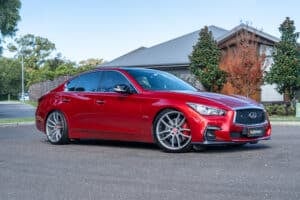
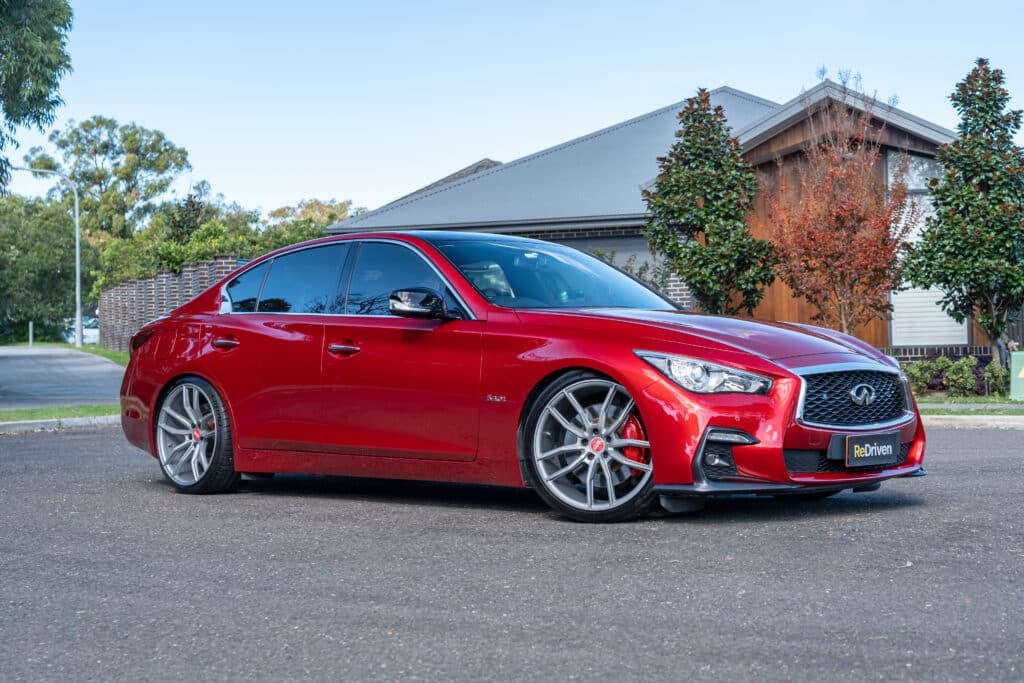
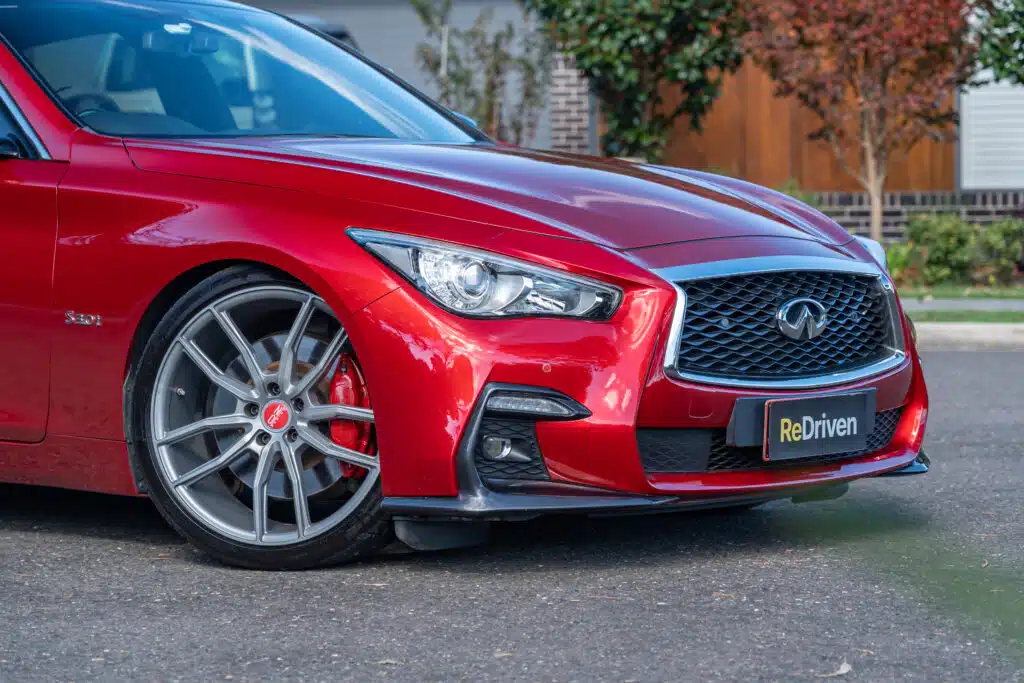
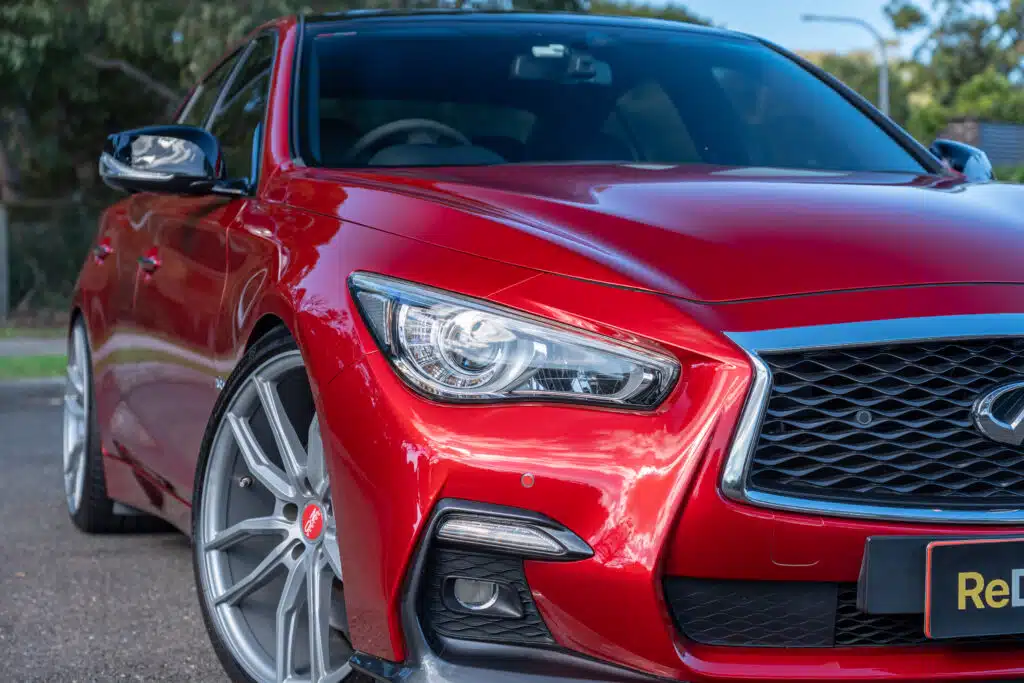


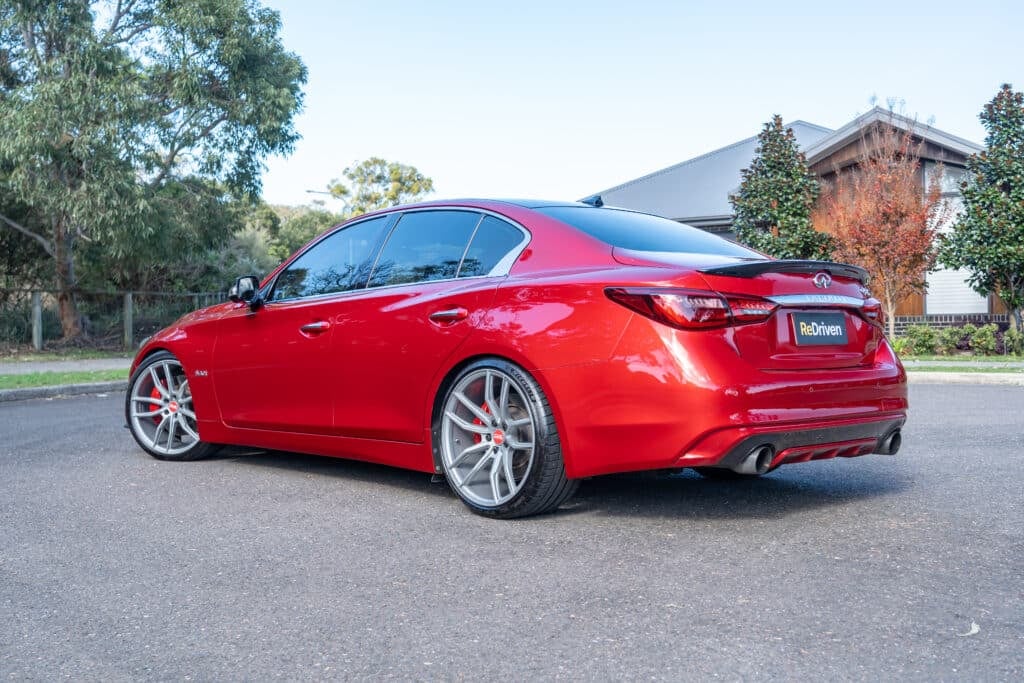
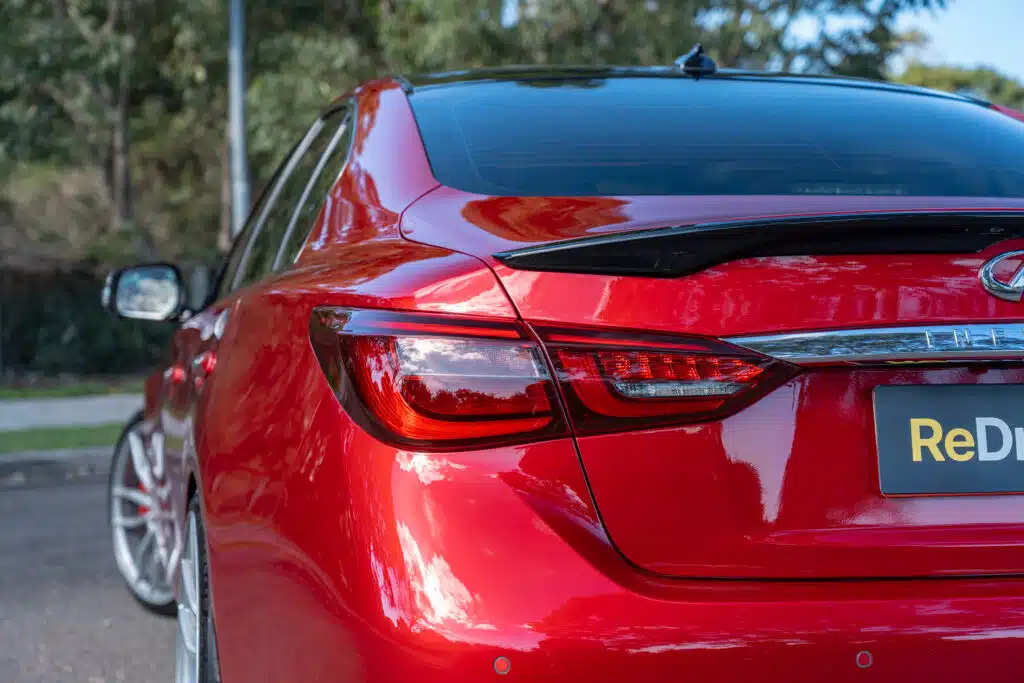
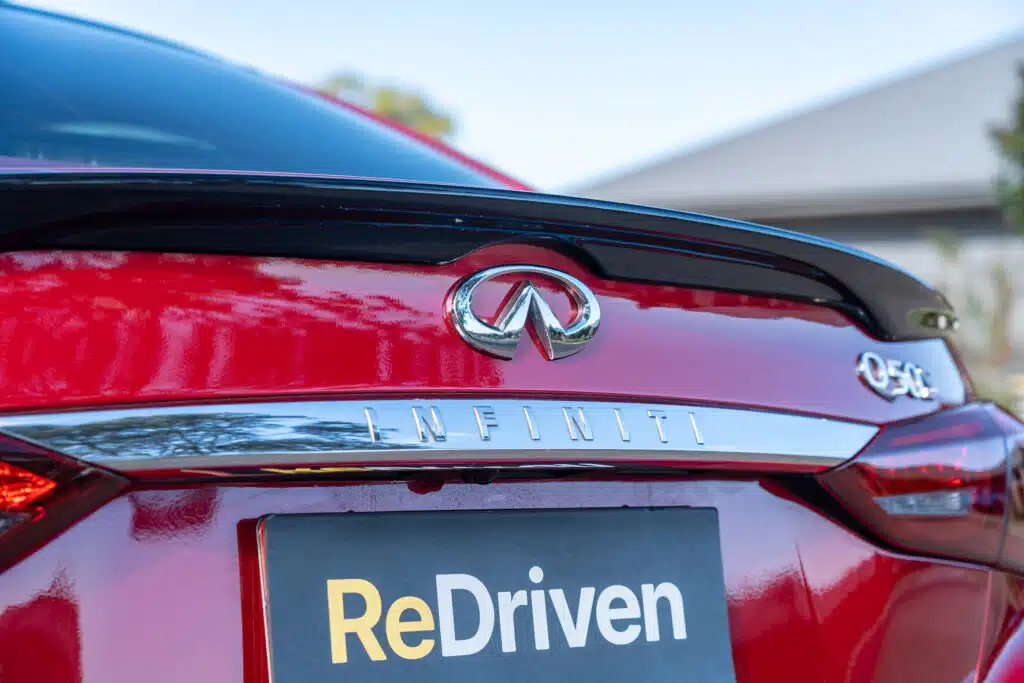
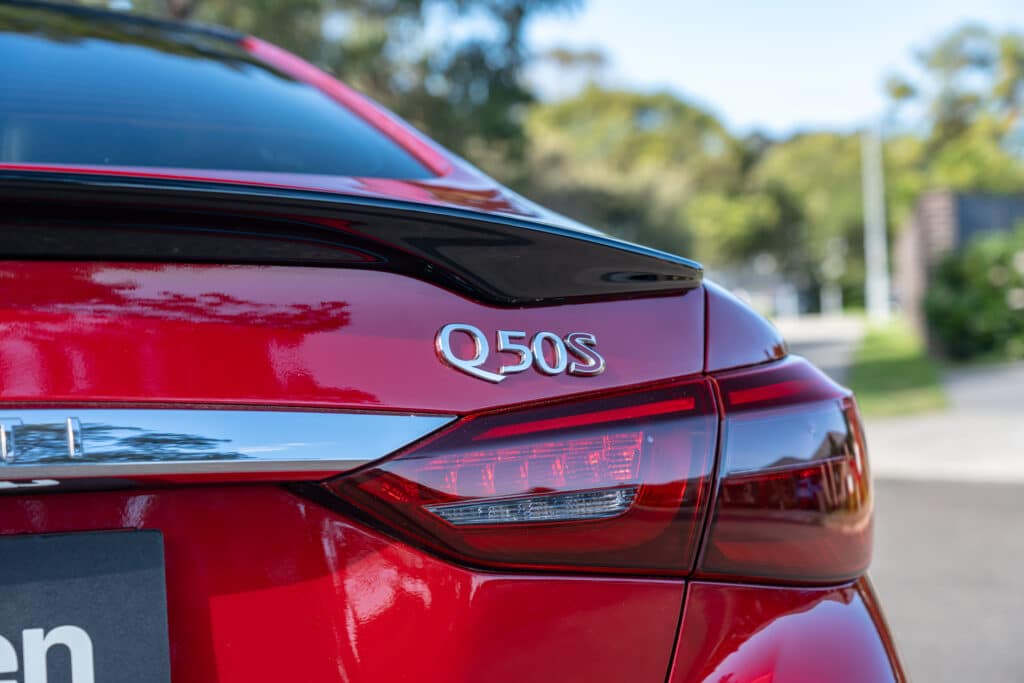
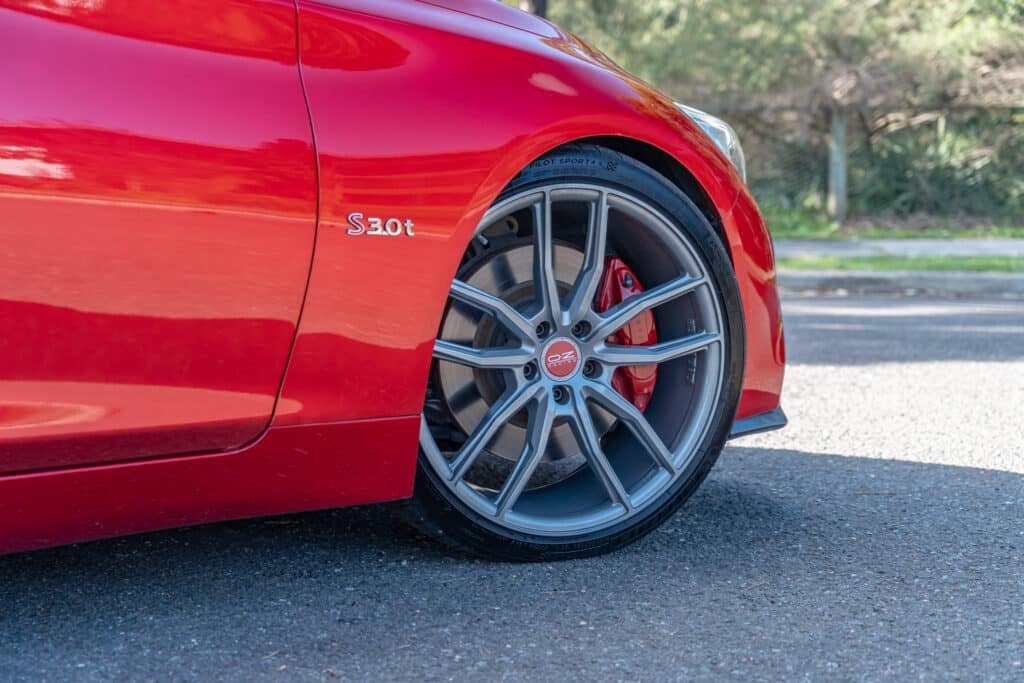
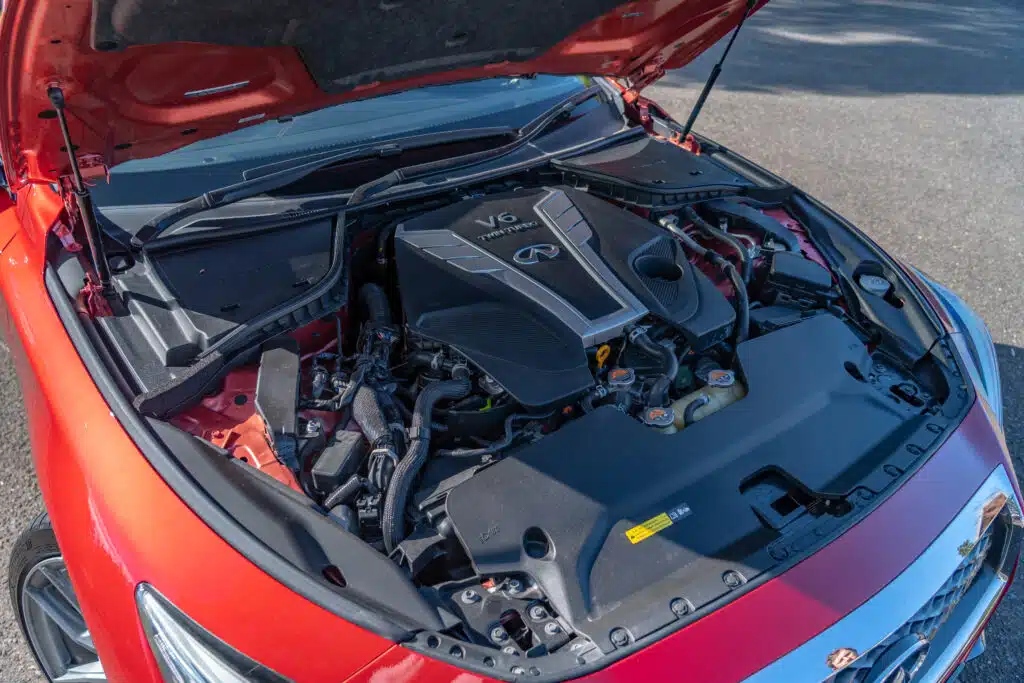
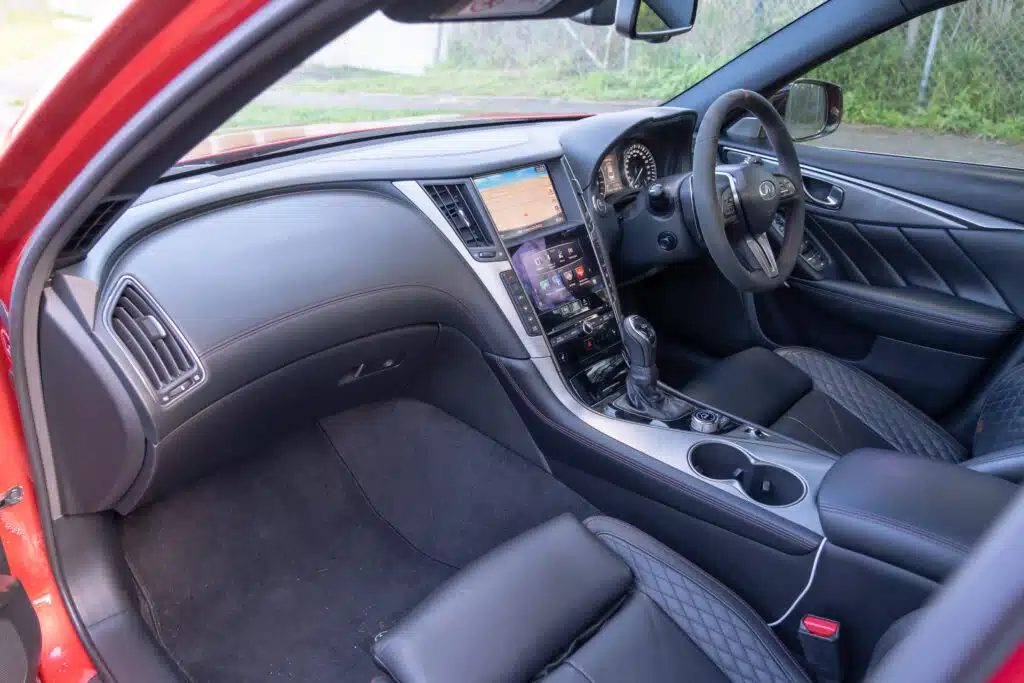
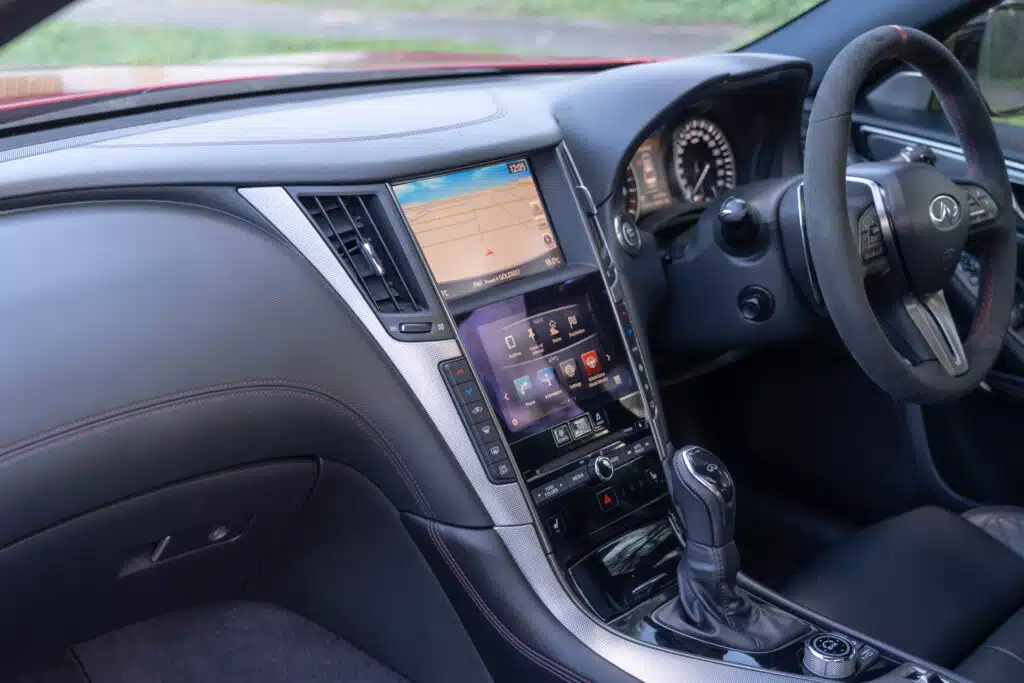
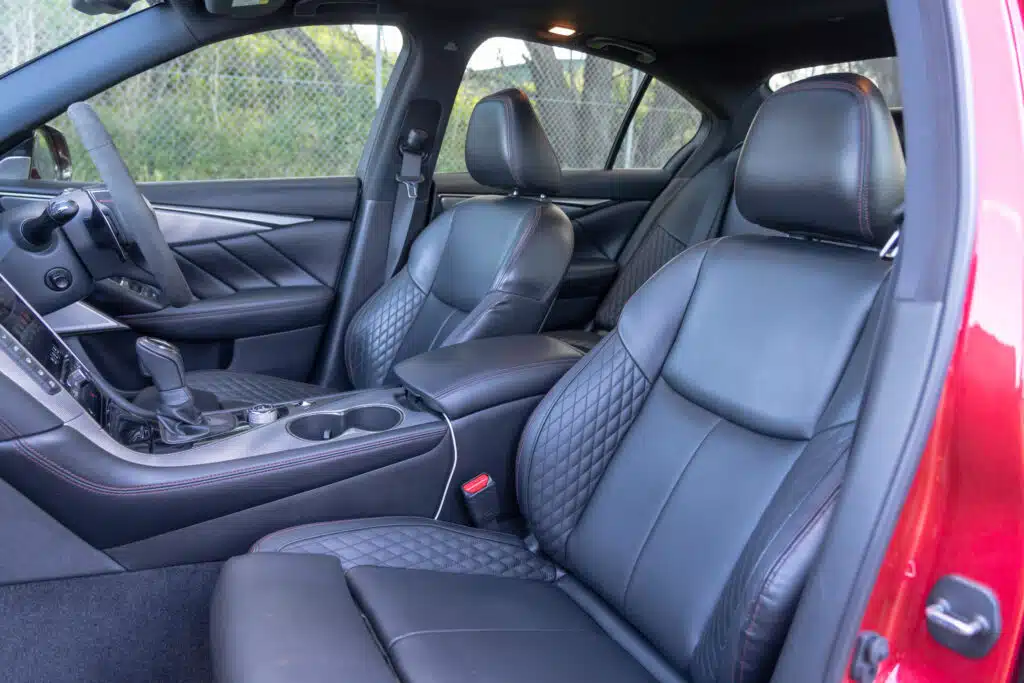
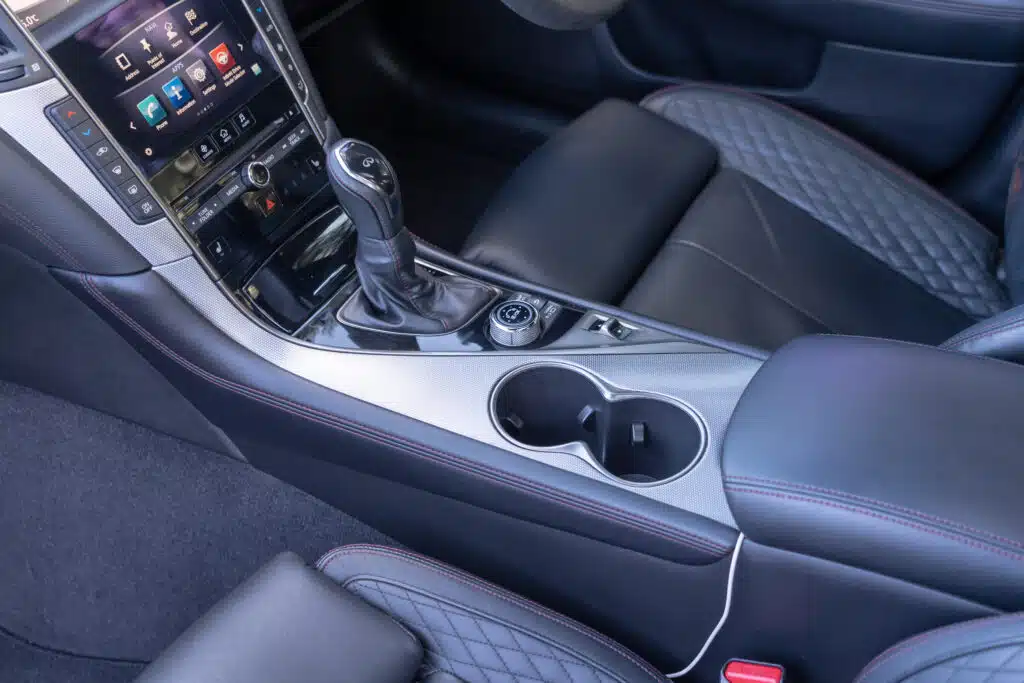
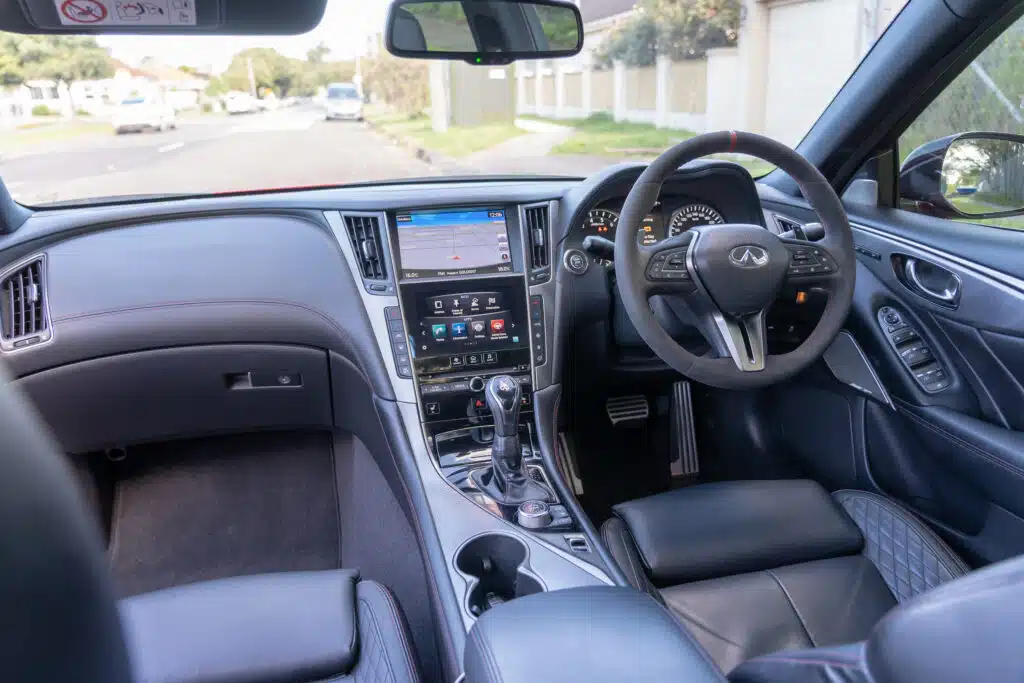
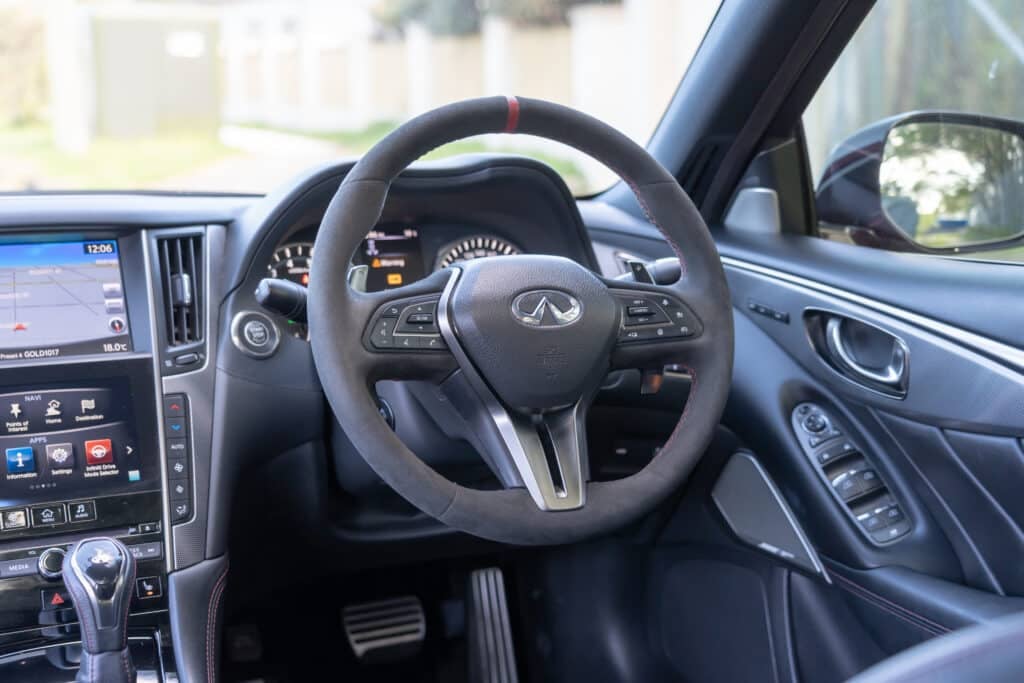
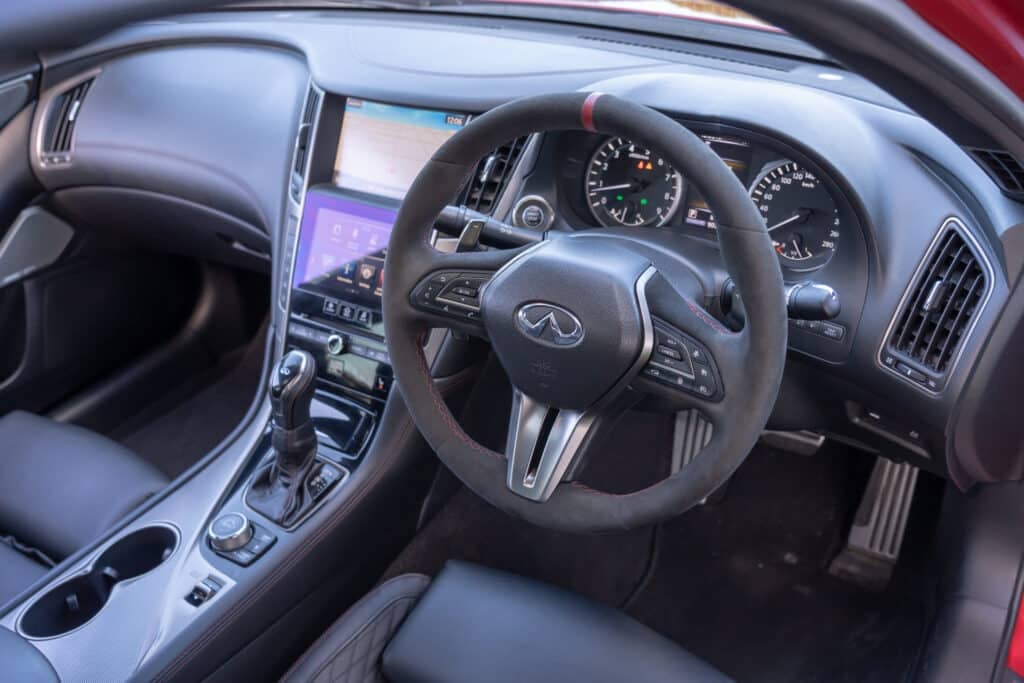
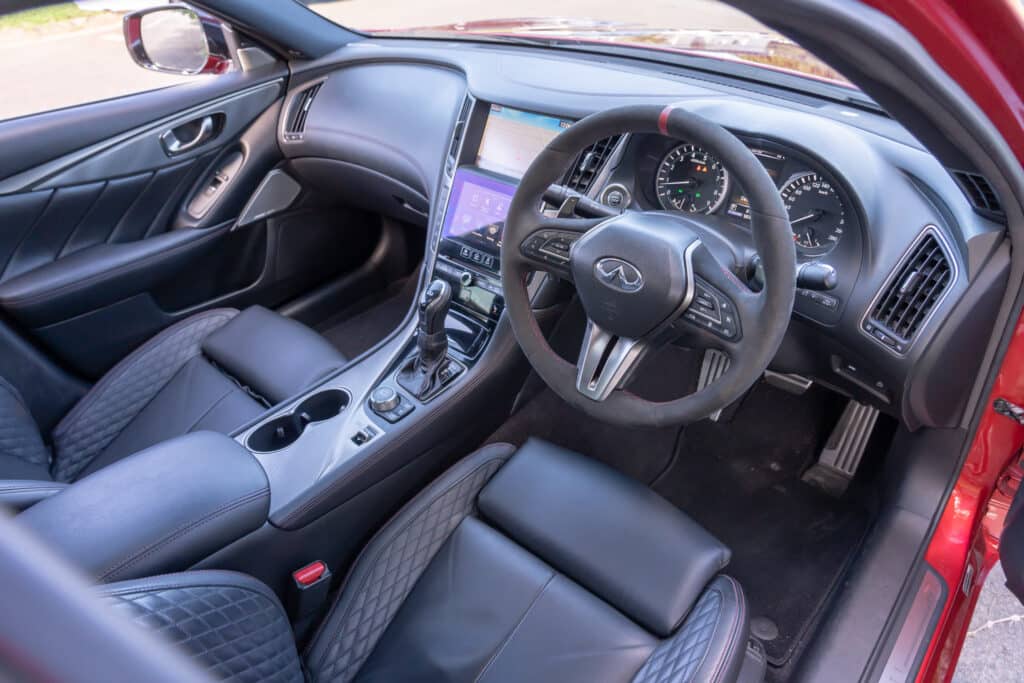
In the often-confusing world of Infiniti and Nissan badging, the Q50 and Q60, also known in some circles as the V37 Nissan Skyline, exist in a kind of premium-performance identity crisis. If it has four doors, you’re looking at a Q50 or a Skyline sedan. If it has two, it’s a Q60 coupe. And in Australia, well, it might be all of those things. Infiniti officially offered both the Q50 and Q60 here, but with the Skyline name still alive and well in Japan, grey imports have become increasingly common locally. What makes it even more of a tangle is that this generation has been in production for over a decade, from 2014 right through to 2024, with multiple updates, facelifts, and ever-changing trim levels along the way.
Infiniti positioned these cars as alternatives to the usual Euro suspects, think BMW 3 and 4 Series, Audi A4 and A5, Mercedes-Benz C-Class (not to mention Lexus IS and RC). And while the intention was clear, the execution didn’t quite land. Infiniti Australia struggled with low brand recognition, minimal dealer presence, and frankly, some head-scratching marketing decisions. That all came to a quiet end in 2020, when Infiniti pulled out of the Australian market entirely. This exit left owners with virtually no formal support network, and Infiniti-specific parts have since become harder to source and occasionally eye-wateringly expensive. That said, plenty of major mechanical components, like the engines, brakes and suspension, are shared with other more common Nissan models, which helps keep some maintenance costs at bay.
The Q50 and Q60 were rolled out in three loosely defined generations. The first, sold between 2014 and 2017, brought sleek design and an interesting blend of sporty dynamics and luxury. Then came the second wave, from 2017 to 2019, which introduced improved infotainment, minor styling changes and reworked trim lines. Finally, the third update, running from 2019 through to 2024 (though not officially available in Australia), brought further design tweaks, most noticeably to the Japanese-market Skyline with a revised grille and tech upgrades like ProPILOT semi-autonomous driving assistance, but very little was done to drastically change the underlying car.
Under the bonnet, things get particularly interesting. Early models featured a Mercedes-Benz-sourced 2.0-litre turbocharged four-cylinder producing 155kW (211hp) and 350Nm (258 lb-ft), but more exciting was the 3.5-litre V6 hybrid option offering a combined 225kW (302hp) and around 350Nm (258 lb-ft), paired exclusively with a seven-speed auto. But the real gem is the VR30DDTT 3.0-litre twin-turbo V6, which in Australia came in two tunes, 224kW (300hp) and 400Nm (295 lb-ft) in the “S” variants, and a whopping 298kW (400hp) and 475Nm (350 lb-ft) in the Red Sport models. This engine also powers the current Nissan Z and is a close cousin of the twin-turbo V6 going into the next-gen Patrol. Sadly, Australia missed out on the naturally aspirated 3.7-litre V6 found in the US and Japan, as well as the rear-drive-only JDM 400R, unless you opt for a grey import. And if you want all-wheel drive in Australia, you’ll be looking at a Japanese import hybrid—because officially, all Australian-delivered models were rear-drive only.
Choosing between trims can be a bit of a minefield. In Australia, the Q50 was offered in nine different trims, from the fairly basic Pure up to the high-performance Red Sport, with mid-range variants like the GT, Sport, and a range of “S” and hybrid-badged models offering different blends of equipment and performance. The Q60 coupe was a bit simpler, available in six trims including the same halo Red Sport model. Standard features across the range typically included leather upholstery, satellite navigation, dual-screen infotainment (which was always more form than function), adaptive cruise control, keyless entry and start, active safety systems, and multi-mode drive selectors. Later models picked up Apple CarPlay and Android Auto, while the imported Skyline variants, depending on spec, can feature Japan-only extras like adaptive high-beam systems, digital mirrors, and the aforementioned ProPILOT tech.
For those in the market for something unique, well-equipped, and rapid, the Q50, Q60 and imported Skyline offer an intriguing value proposition on the used market. Thanks to massive depreciation, they now represent astonishing bang for your buck, especially the Red Sport variants. But of course, the flipside of that depreciation is a big question mark, will values keep dropping, or are we at the bottom of the curve? Only time will tell. For now though, if you can stomach the parts availability risk and lack of official support, there’s a hell of a lot of car here for surprisingly little money.
That said, they’re not perfect, and in our “What Goes Wrong” section below, we’ll cover the most common issues reported with these cars, from infotainment glitches to turbo-related troubles. But if you’re after something different, packed with tech and power, and you don’t mind flying a little under the radar, the Q50, Q60 or Skyline might just be the left-field hero you’ve been looking for.
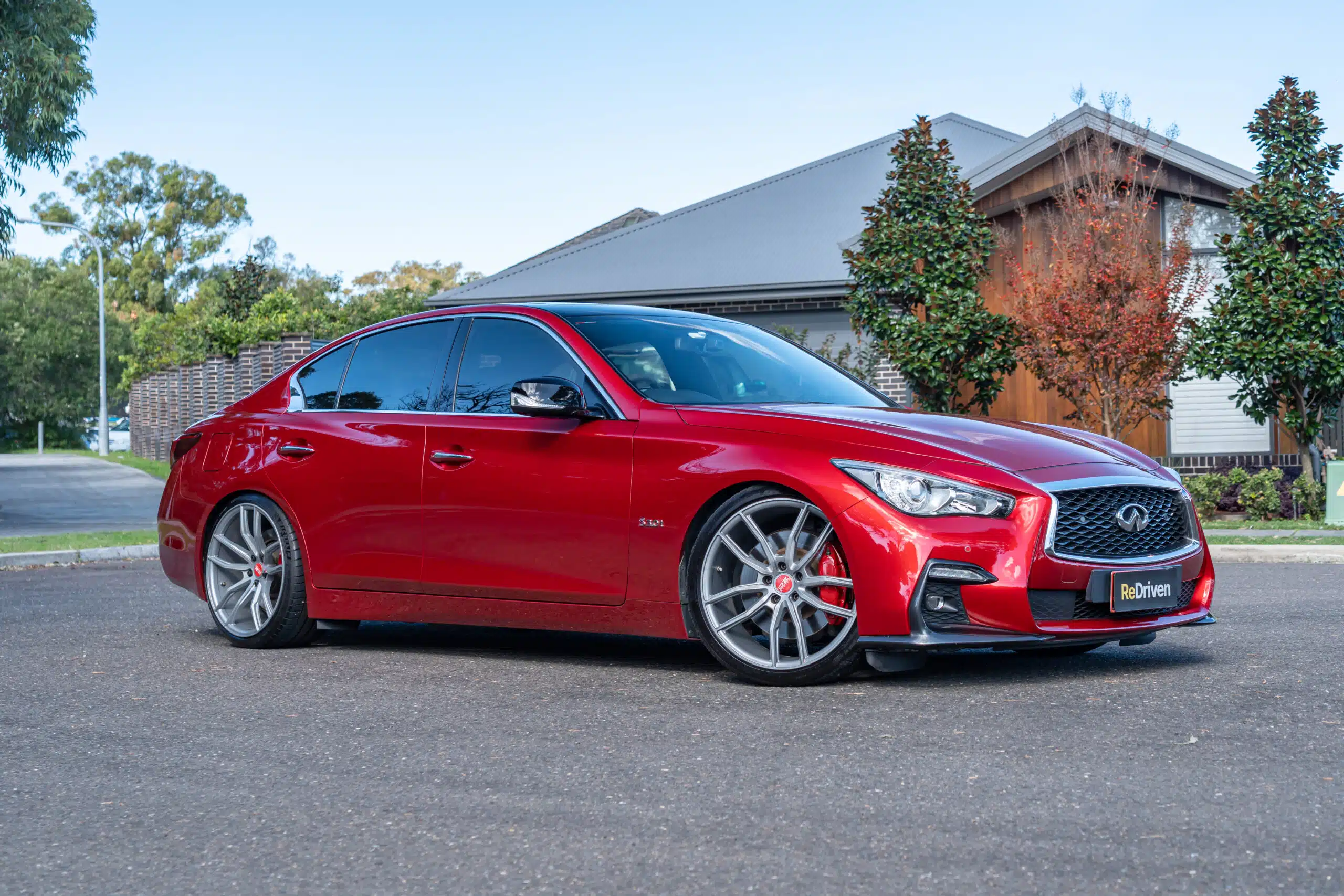
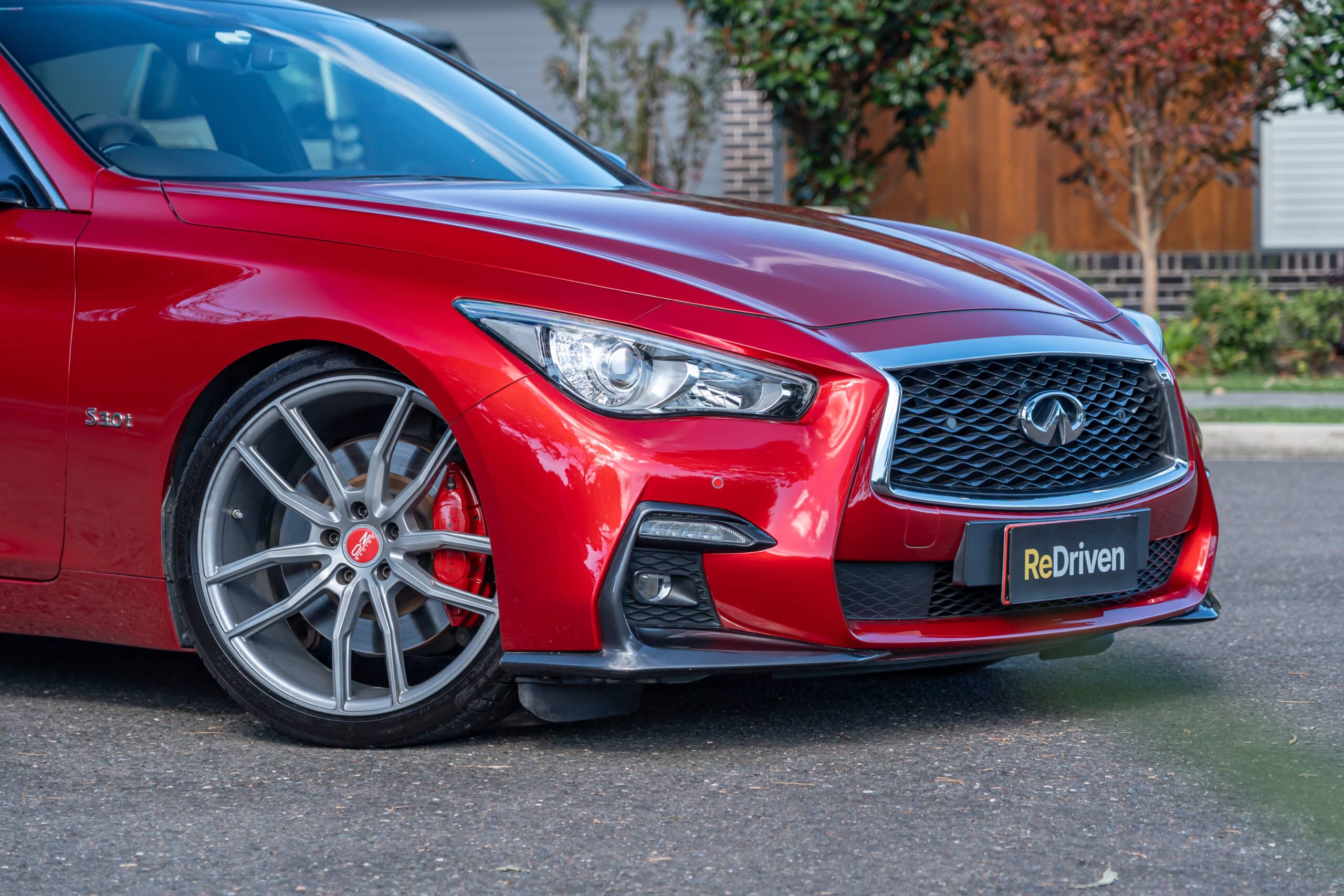
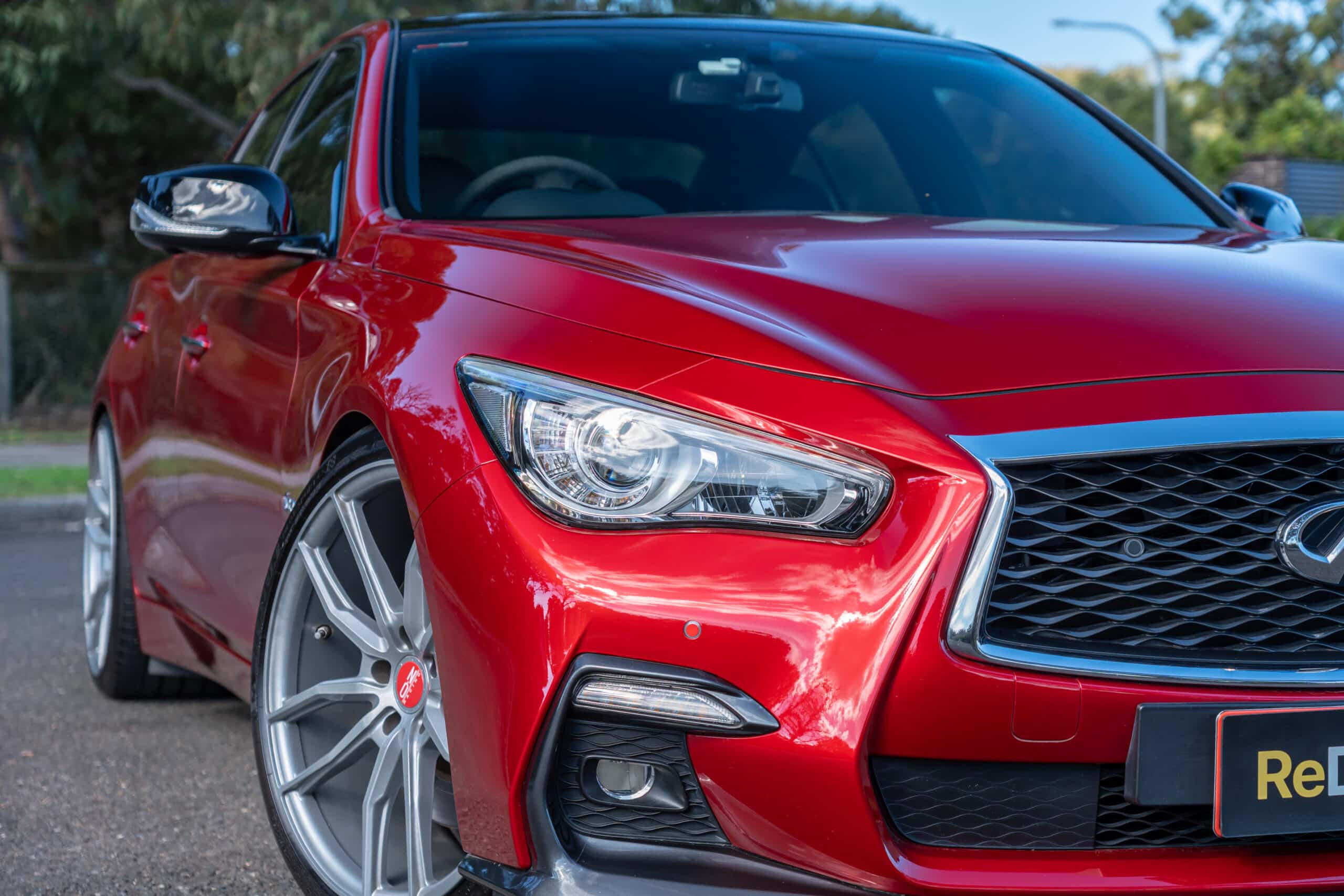
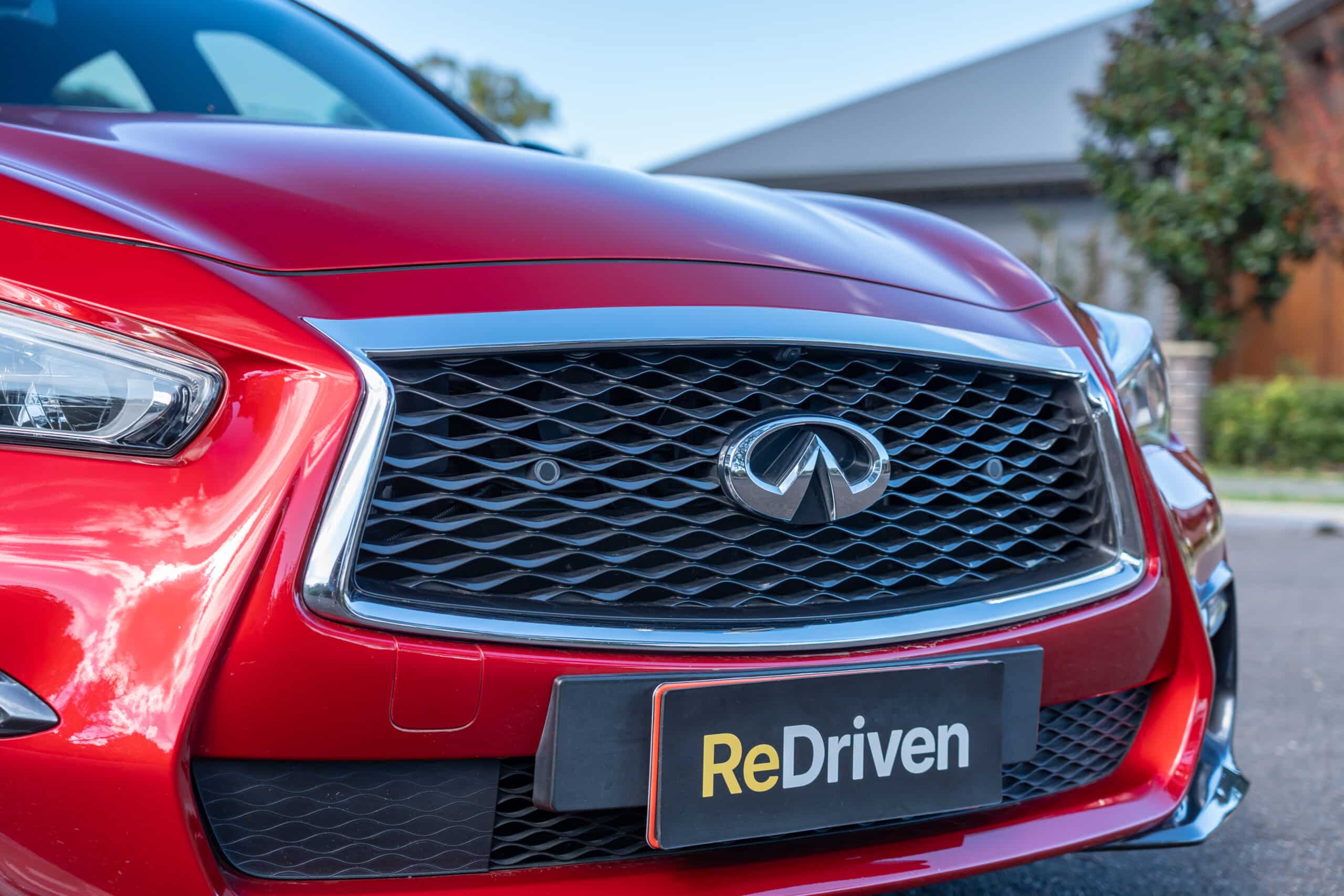
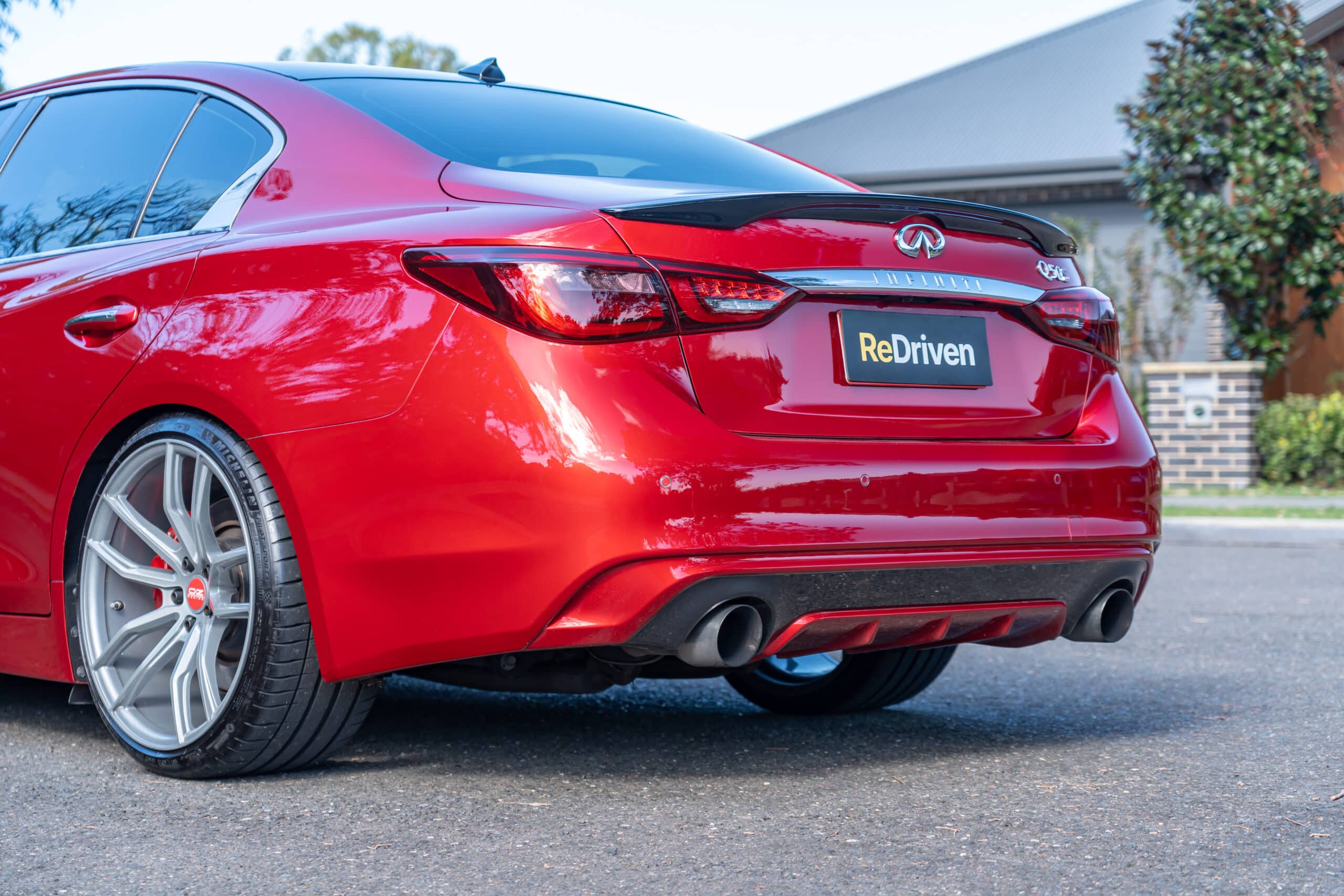
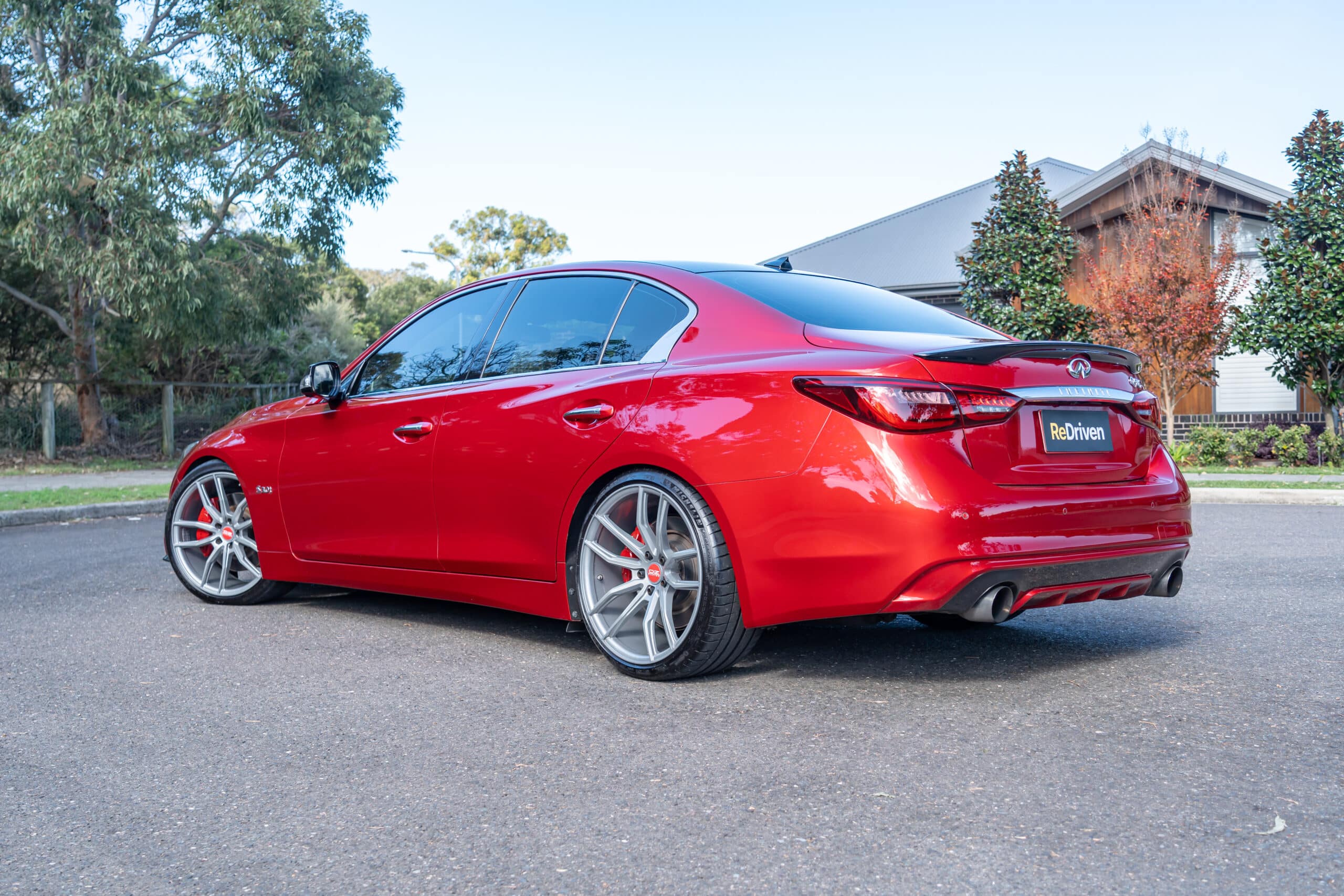
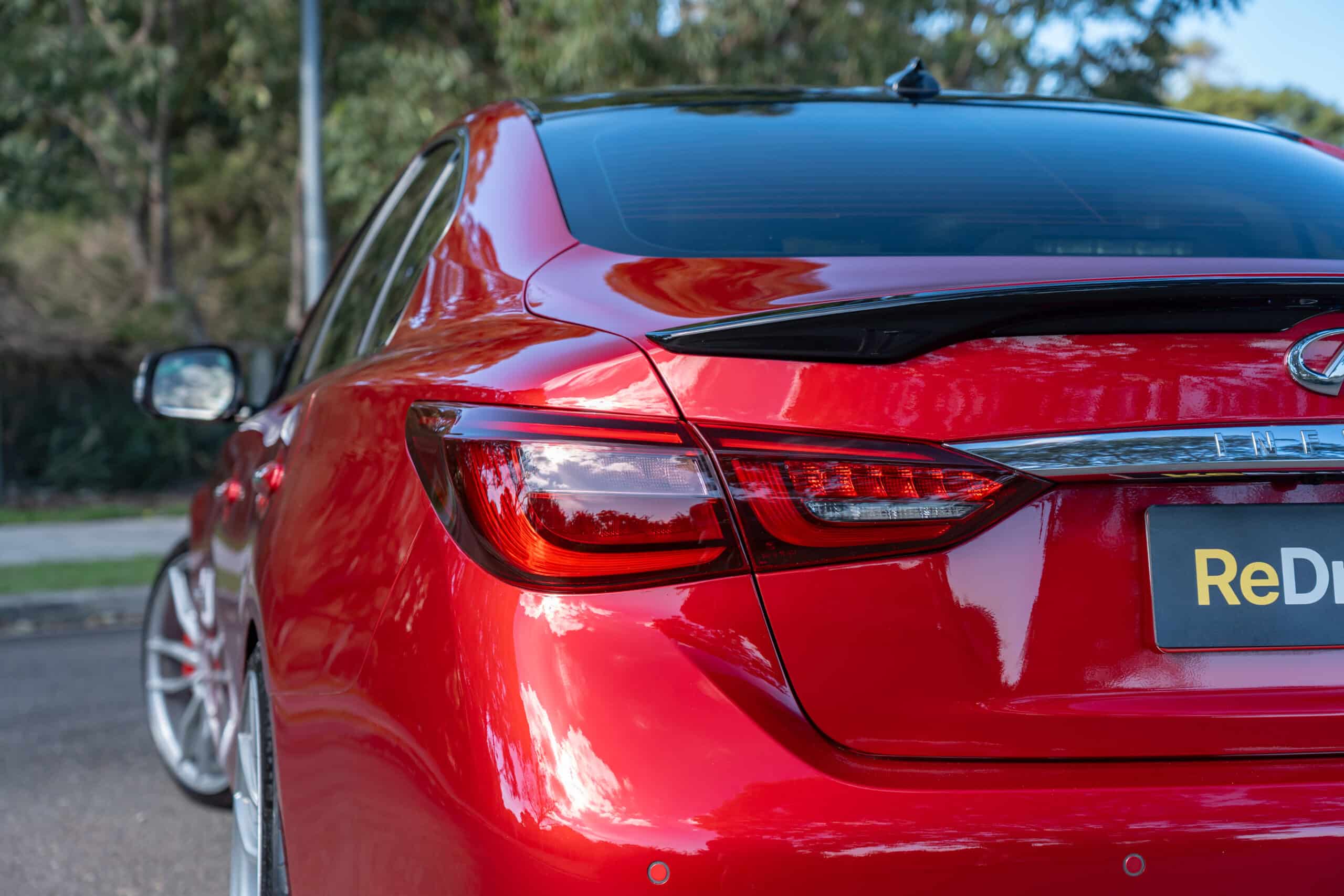
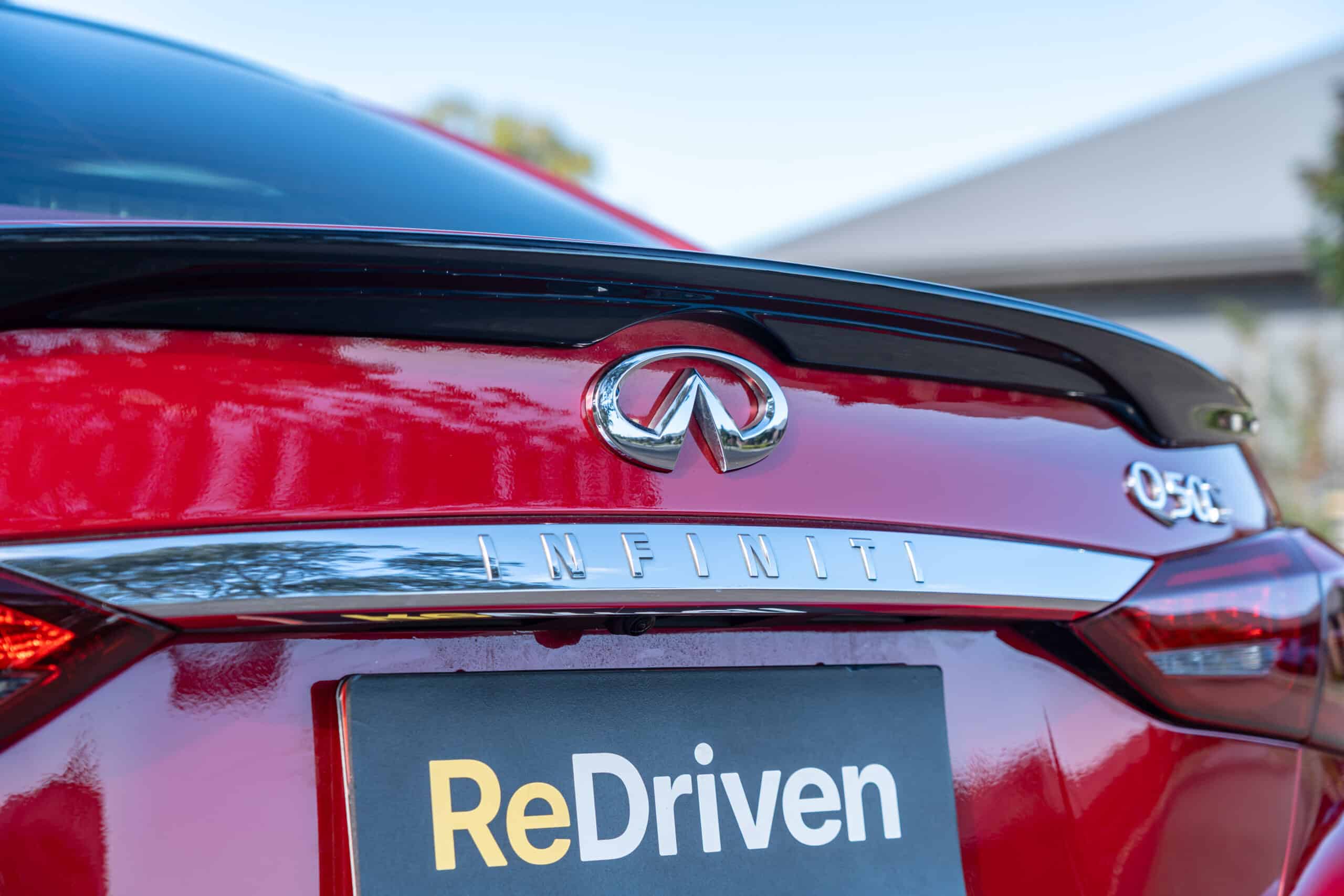
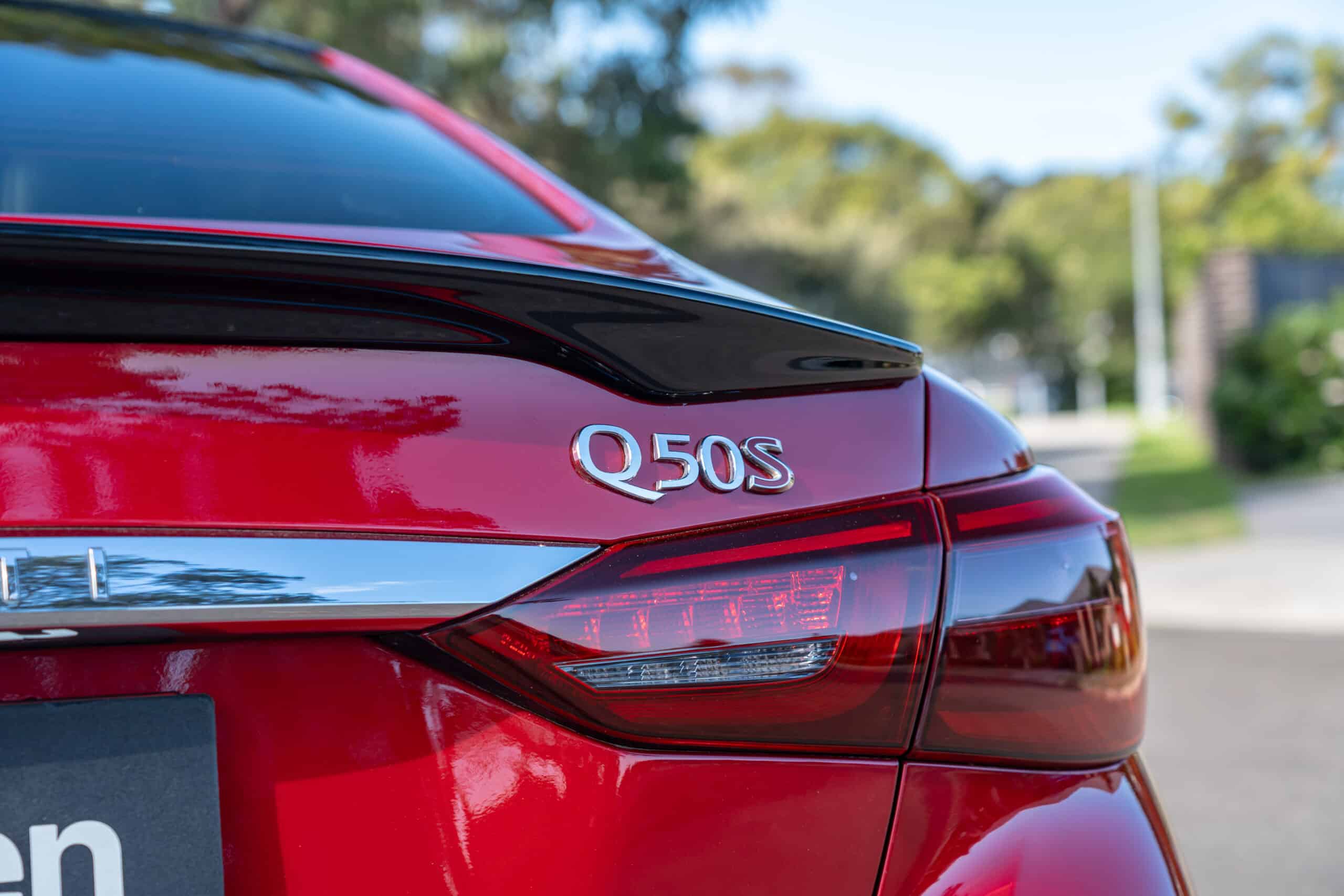
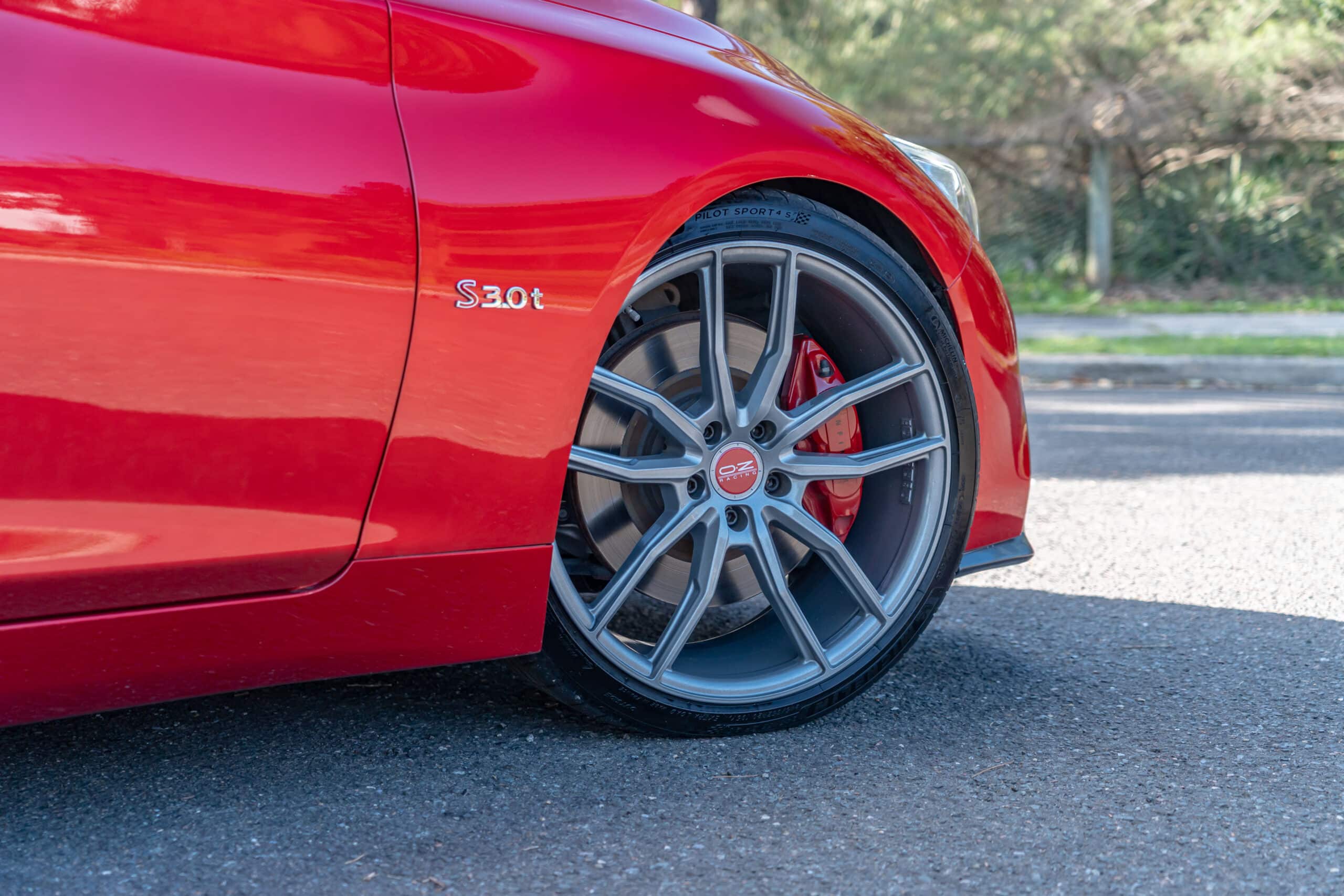
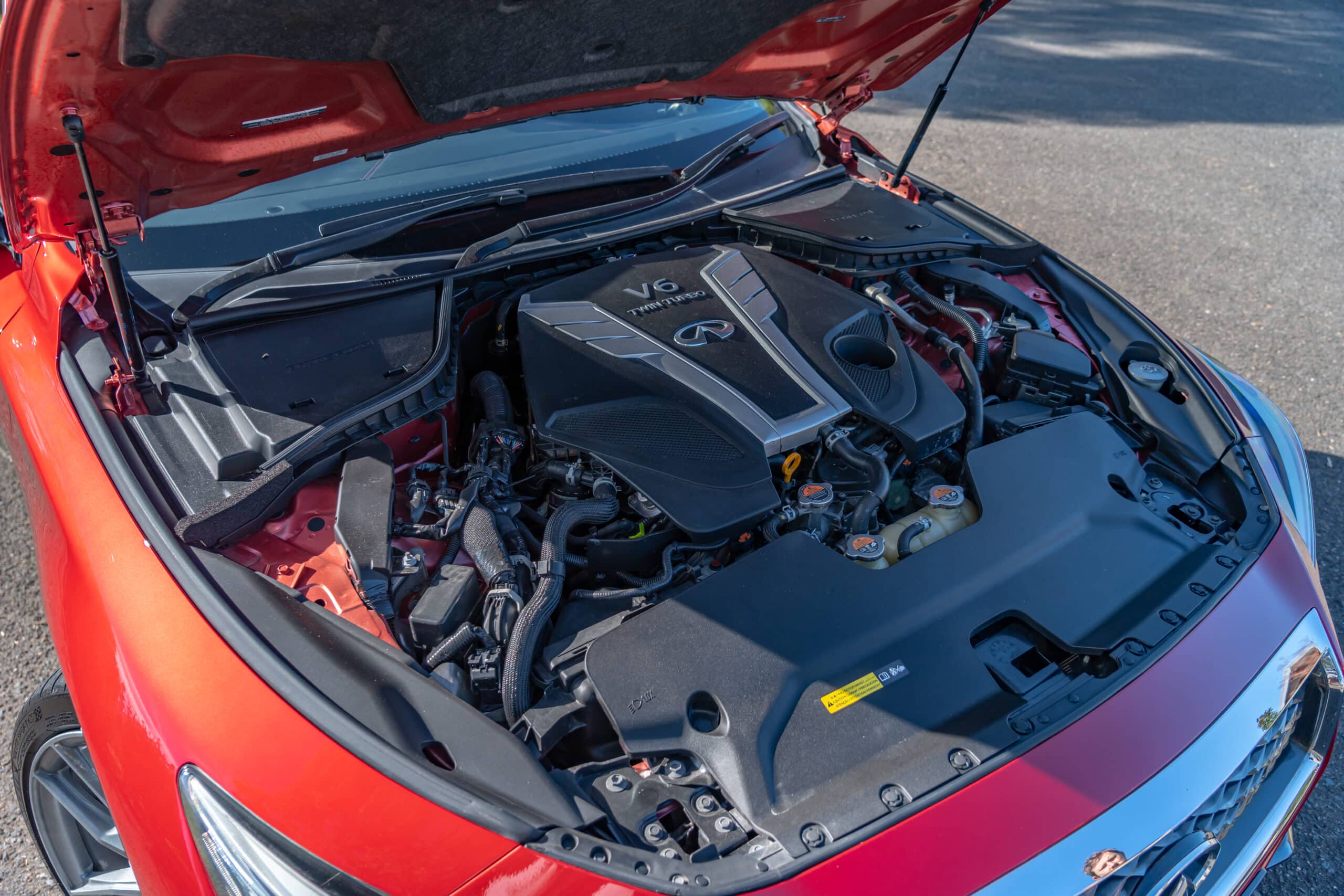
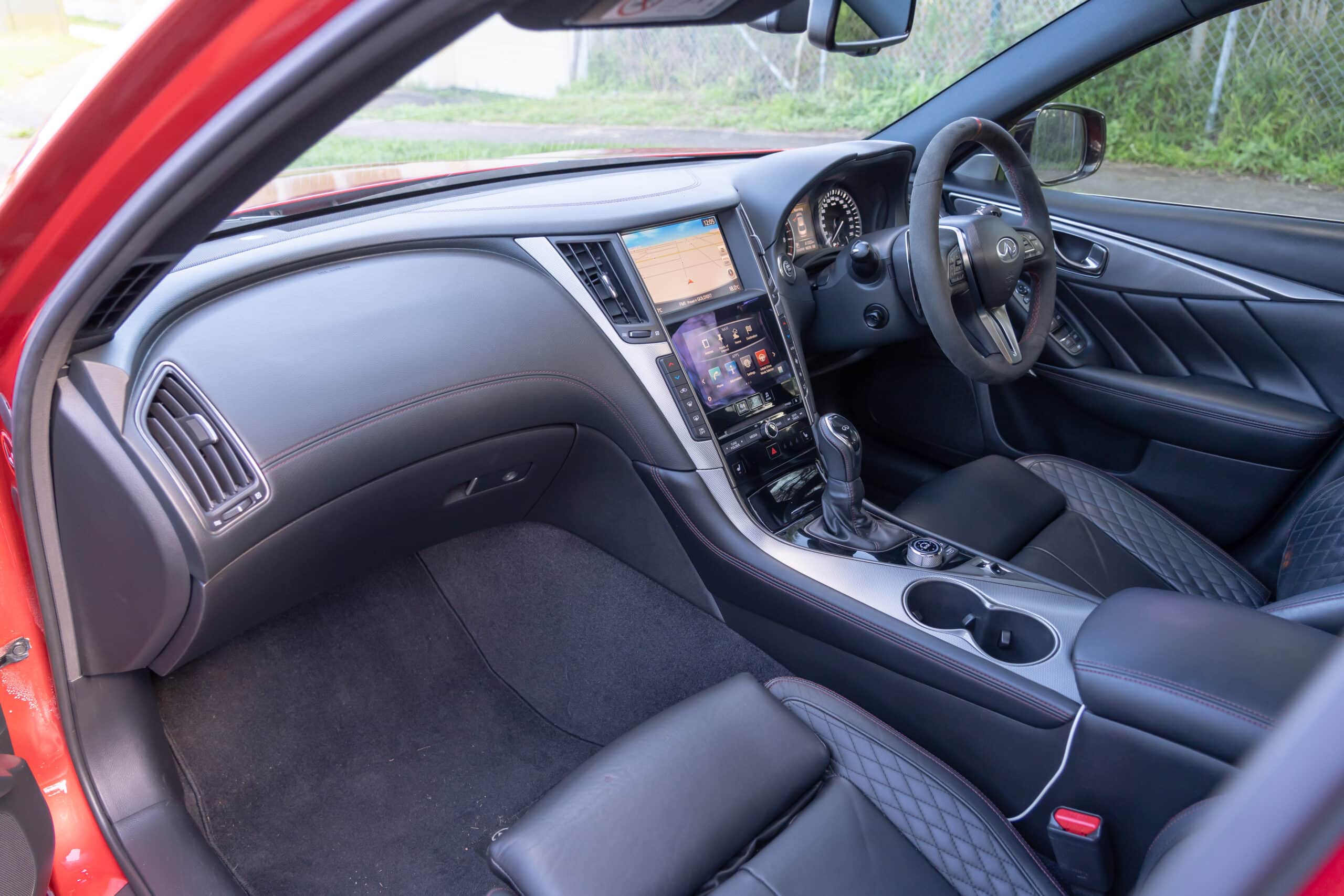
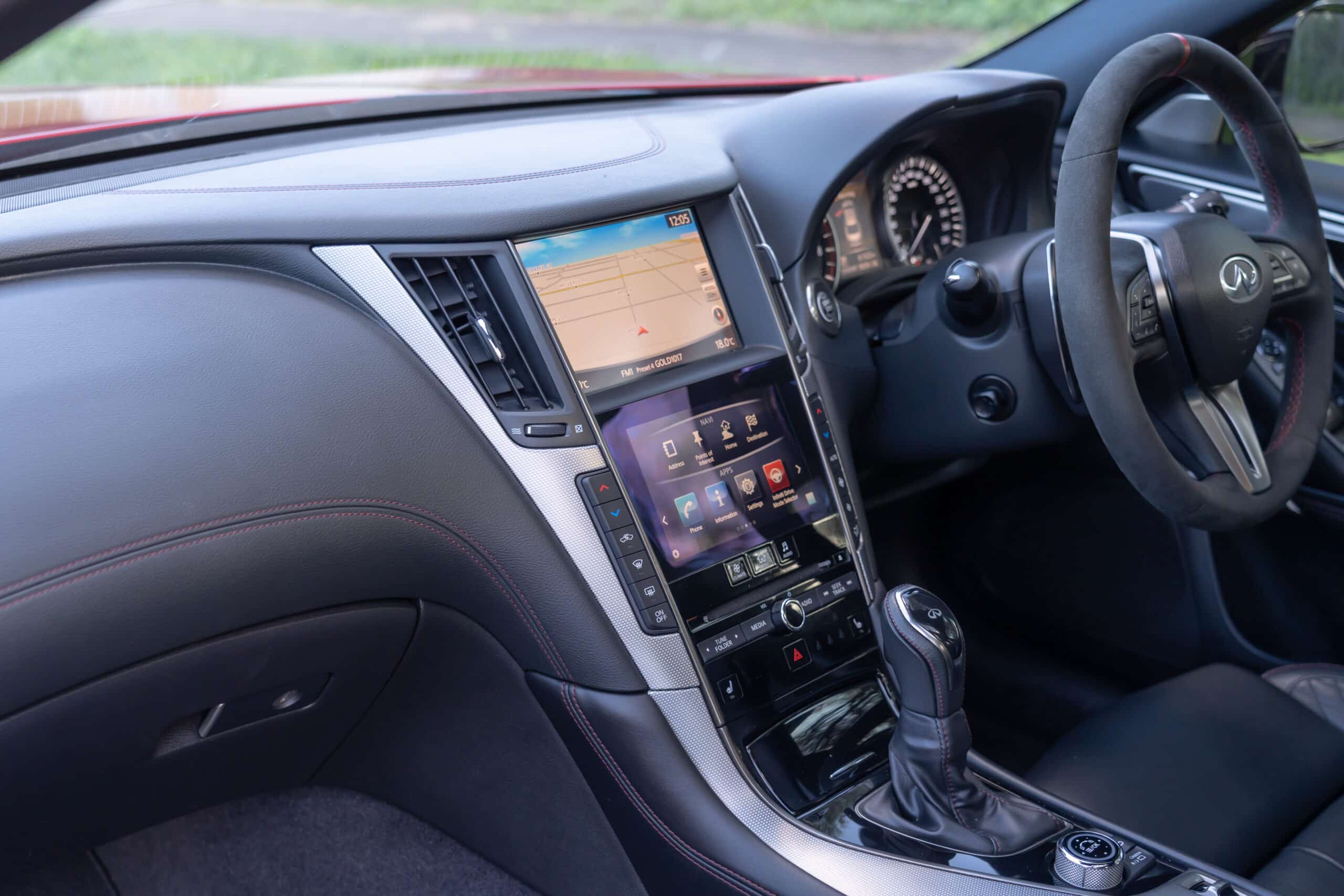
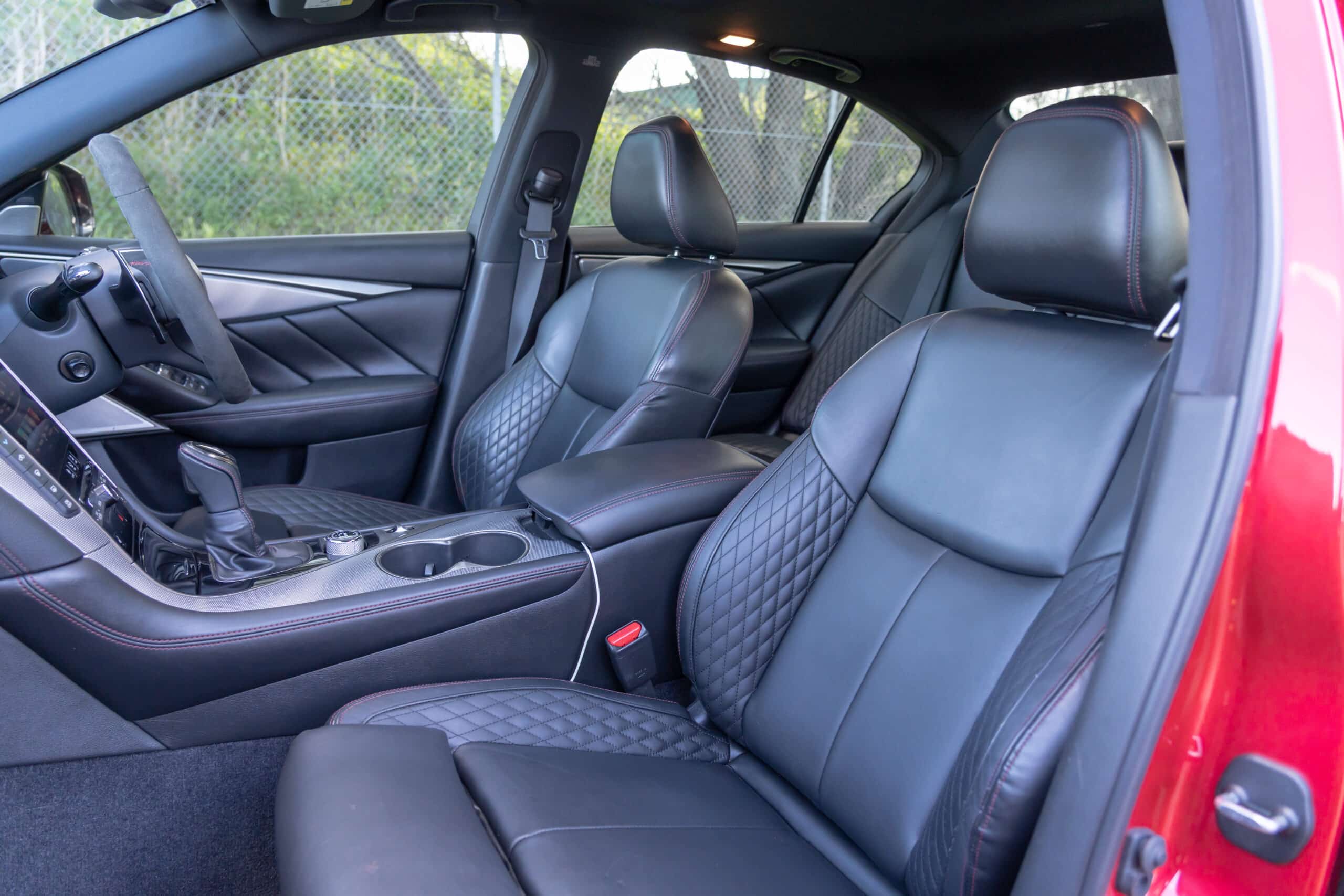
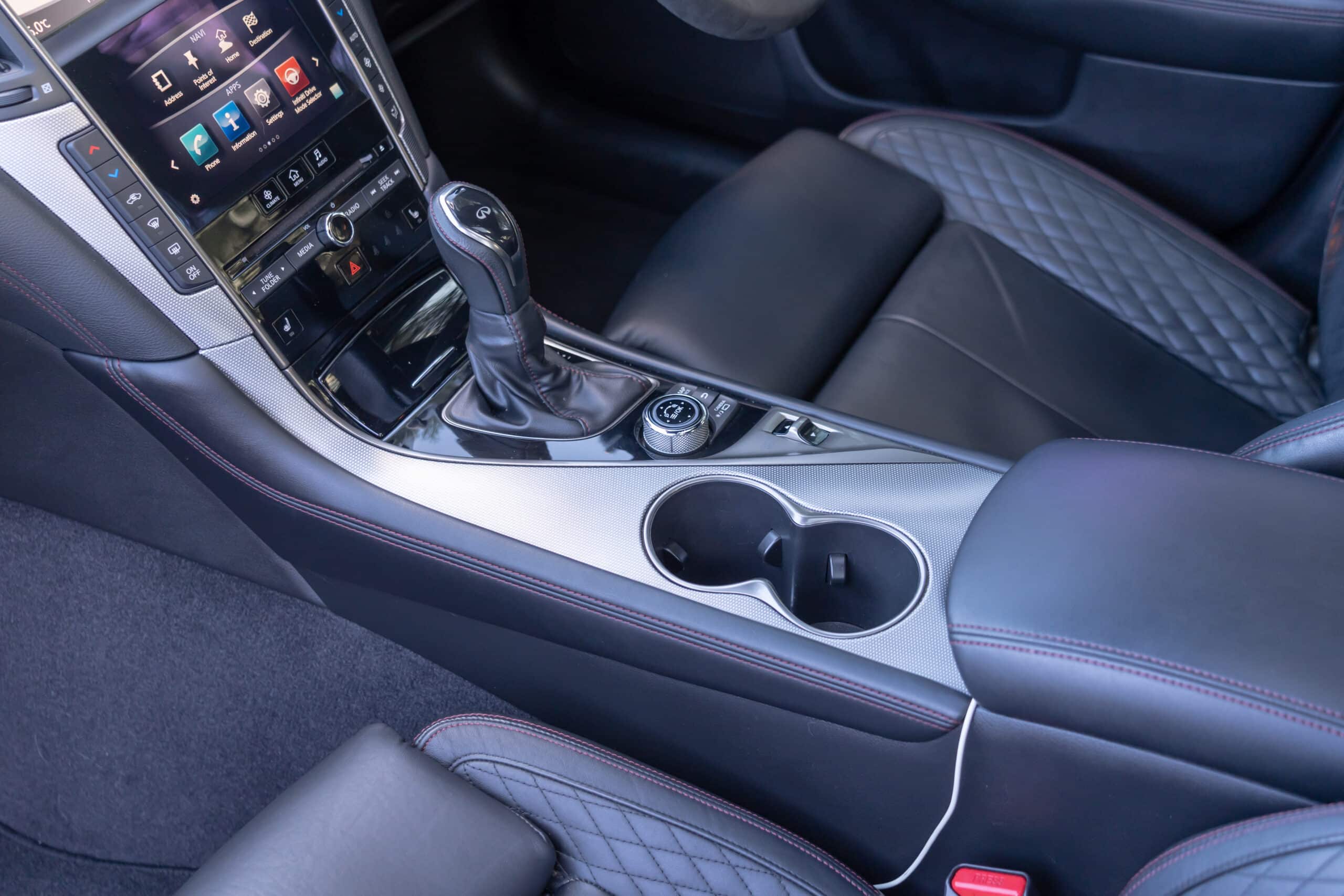
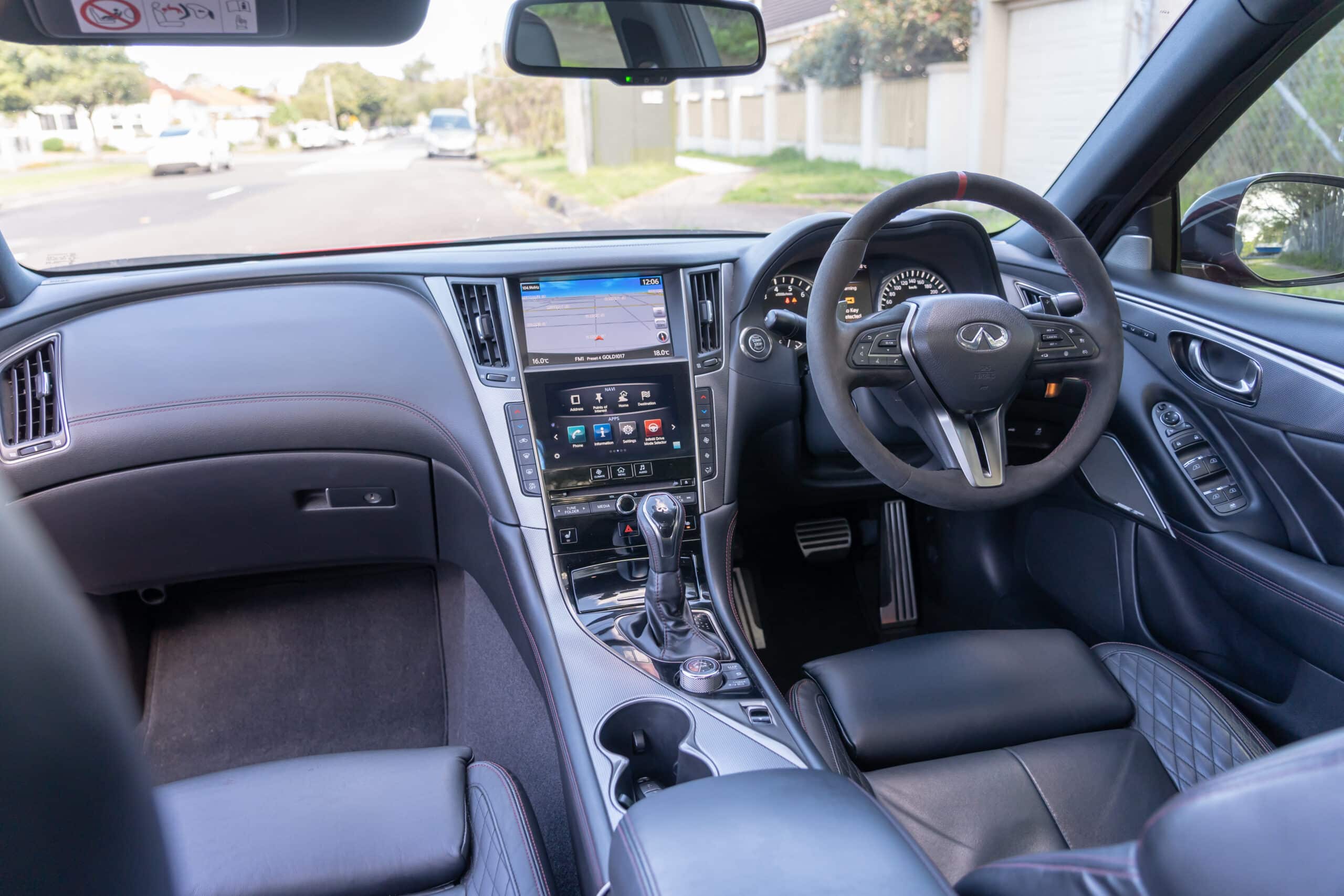
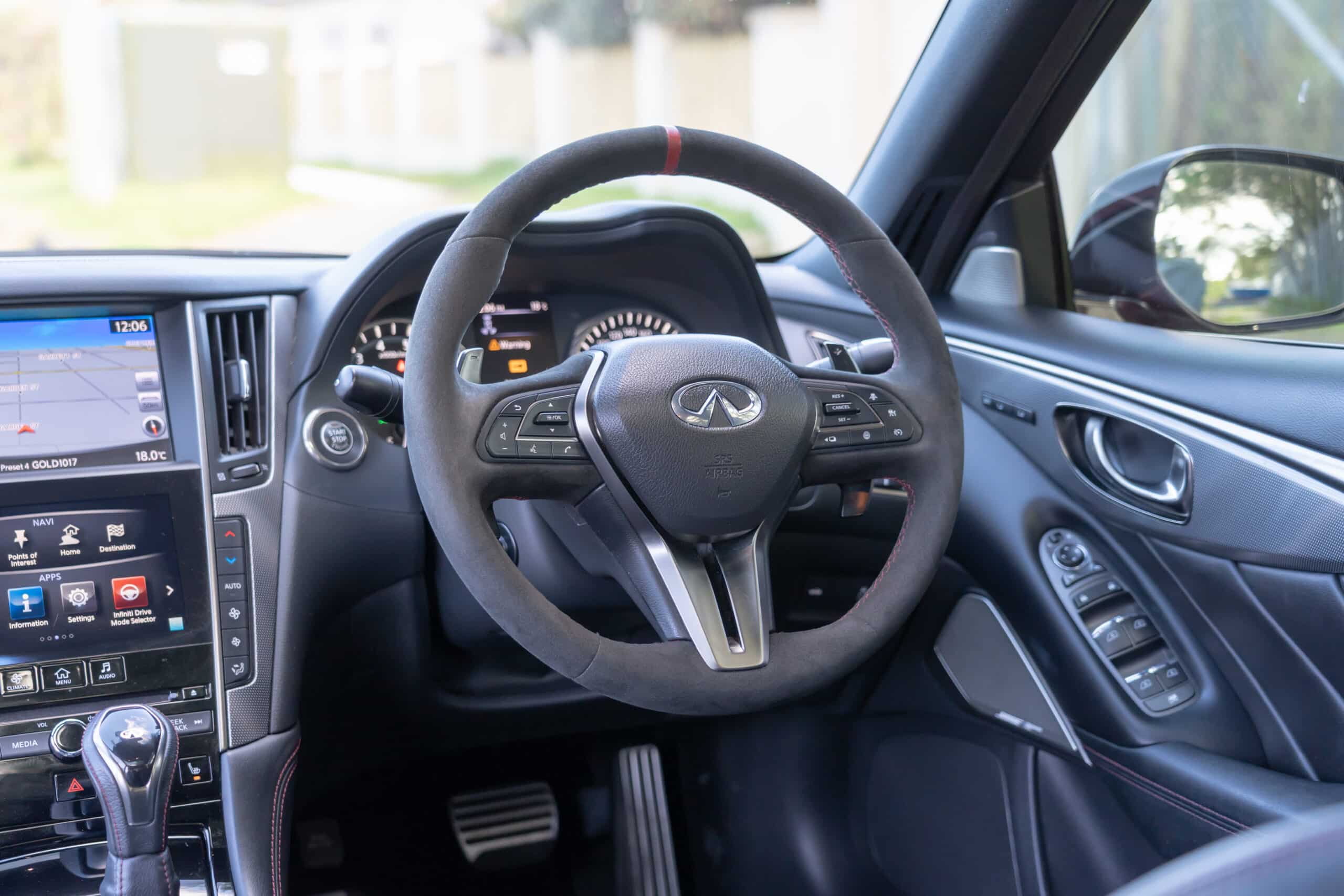
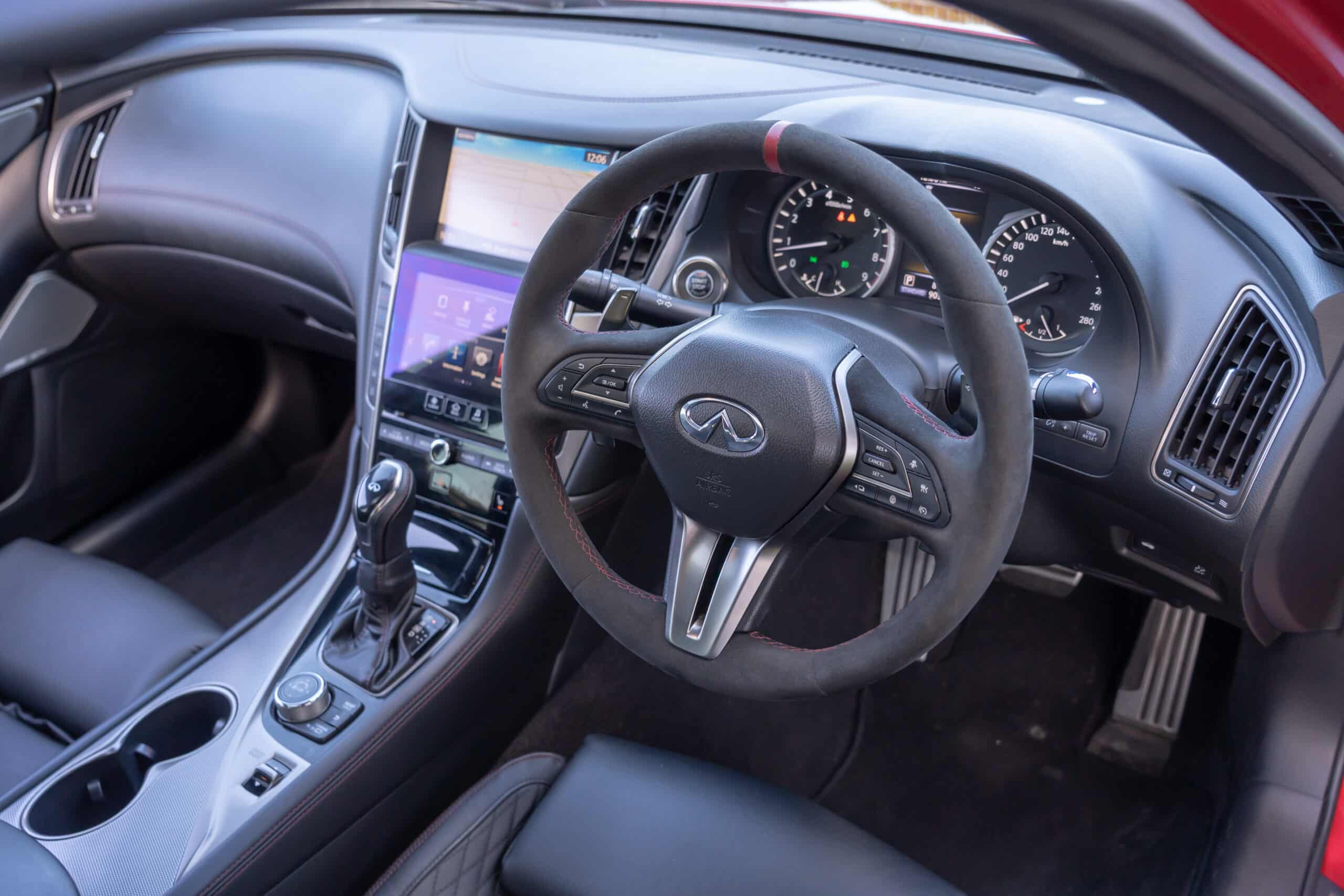
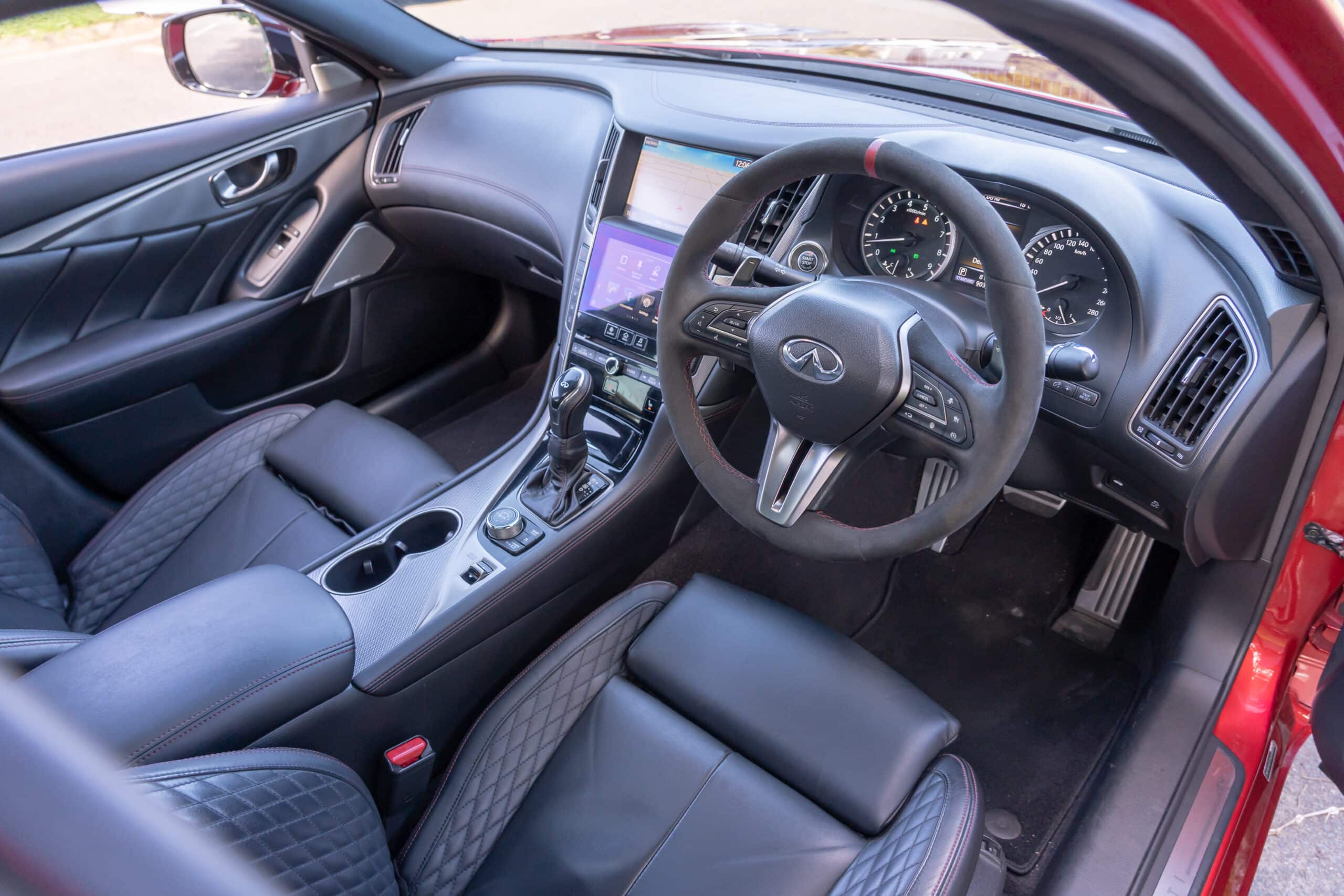



















Exterior:
Let’s begin with the paintwork, or more specifically, the clear coat. Multiple owners have pointed out that the factory clear coat is surprisingly thin. In some cases, even after just a couple of proper details, there was very little clear coat left to work with. As a result, we highly recommend protecting the entire vehicle with paint protection film (PPF) if you’re planning to maintain the finish over the long term.
Next, the bonnet and boot struts. These are known to wear prematurely. In fact, many owners suggest it’s not a question of if they’ll fail, but when. The silver lining is that replacements are inexpensive and very straightforward to fit.
Now onto the windows. If the power windows start to slow down dramatically, it may appear to be a motor or regulator issue. However, in most cases, it’s simply a lack of lubrication. A quick spray of silicone lubricant along the window channels typically resolves the problem, an easy and cost-effective fix.
However, not all issues are quite so simple. The sunroofs on these vehicles are a common source of frustration. While some leaks are the result of blocked drainage channels, others stem from poor design, specifically, misaligned or poorly connected drainage components. In some instances, water intrusion can reach the keyless entry antenna, resulting in intermittent or complete system failure. Often, water is visibly dripping down the A-pillars, but in more concerning cases, it drains behind the trim unnoticed, silently causing damage until significant faults begin to appear.
Brake rotor wear is another area of concern, particularly with some owners reporting premature warping under moderate use. In addition, the factory suspension, especially the adaptive dampers on higher-grade models, has received criticism for early failure. Unfortunately, replacement costs can be surprisingly high given the vehicle’s Nissan underpinnings. Modifying the suspension by lowering the vehicle on standard struts tends to exacerbate the problem further.
But arguably the greater issue is part availability. As Infiniti has ceased operations in Australia, Infiniti-specific components are becoming increasingly difficult to source. Some owners have experienced extended wait times, often several months, for key items to arrive from Japan. And with limited or non-existent dealership support, even relatively straightforward maintenance tasks can become unnecessarily complicated.
Interior:
Inside, while the Infiniti’s cabin materials and layout were impressive when new, several age-related issues are beginning to surface. Chief among these is the failure of the HVAC system’s blend door actuators. A tell-tale sign is when cold air only blows from one side of the cabin. Thankfully, the repair is straightforward and reasonably priced.
Another common complaint involves the chrome-look plastic trim found around the cup holders, door handles, and window switches. Over time, this
Exterior:
Let’s begin with the paintwork, or more specifically, the clear coat. Multiple owners have pointed out that the factory clear coat is surprisingly thin. In some cases, even after just a couple of proper details, there was very little clear coat left to work with. As a result, we highly recommend protecting the entire vehicle with paint protection film (PPF) if you’re planning to maintain the finish over the long term.
Next, the bonnet and boot struts. These are known to wear prematurely. In fact, many owners suggest it’s not a question of if they’ll fail, but when. The silver lining is that replacements are inexpensive and very straightforward to fit.
Now onto the windows. If the power windows start to slow down dramatically, it may appear to be a motor or regulator issue. However, in most cases, it’s simply a lack of lubrication. A quick spray of silicone lubricant along the window channels typically resolves the problem, an easy and cost-effective fix.
However, not all issues are quite so simple. The sunroofs on these vehicles are a common source of frustration. While some leaks are the result of blocked drainage channels, others stem from poor design, specifically, misaligned or poorly connected drainage components. In some instances, water intrusion can reach the keyless entry antenna, resulting in intermittent or complete system failure. Often, water is visibly dripping down the A-pillars, but in more concerning cases, it drains behind the trim unnoticed, silently causing damage until significant faults begin to appear.
Brake rotor wear is another area of concern, particularly with some owners reporting premature warping under moderate use. In addition, the factory suspension, especially the adaptive dampers on higher-grade models, has received criticism for early failure. Unfortunately, replacement costs can be surprisingly high given the vehicle’s Nissan underpinnings. Modifying the suspension by lowering the vehicle on standard struts tends to exacerbate the problem further.
But arguably the greater issue is part availability. As Infiniti has ceased operations in Australia, Infiniti-specific components are becoming increasingly difficult to source. Some owners have experienced extended wait times, often several months, for key items to arrive from Japan. And with limited or non-existent dealership support, even relatively straightforward maintenance tasks can become unnecessarily complicated.
Interior:
Inside, while the Infiniti’s cabin materials and layout were impressive when new, several age-related issues are beginning to surface. Chief among these is the failure of the HVAC system’s blend door actuators. A tell-tale sign is when cold air only blows from one side of the cabin. Thankfully, the repair is straightforward and reasonably priced.
Another common complaint involves the chrome-look plastic trim found around the cup holders, door handles, and window switches. Over time, this trim tends to chip or peel. Replacements and re-chroming options are available, but many owners opt to repaint the pieces in a satin or matte metallic finish, which offers a cleaner and more modern look.
While discussing the window switches, it’s worth noting that some users have reported that they’re not particularly resilient. A heavy or aggressive touch can result in premature failure, so it’s best to handle them with care.
The same level of caution should be applied to most of the cabin electronics. While not widespread, there are enough reports of random electrical faults, from unresponsive switches to complete power loss, that it’s worth approaching the car’s electrical system with some caution. Sometimes the issue is something simple, like a failing battery or alternator, but other times it may be indicative of a deeper, more complex fault.
And then there’s the infotainment system, which is arguably the weakest point of the interior. These systems are now very much showing their age. Common issues include complete screen failure, screen flickering, sluggish performance, Bluetooth connectivity problems, or the system not turning on at all. Even when functioning, the interface feels outdated and clunky, regardless of model year or software updates.
In overseas markets, Apple CarPlay and Android Auto were introduced in 2019, but unfortunately Australian-delivered Q50 and Q60 models missed out. Even in markets where it was offered, many users still reported unstable connections and software bugs. The good news is there are aftermarket solutions available that retain the OEM screen while adding full smartphone integration. Alternatively, some owners upgrade to an all-new Tesla-style vertical screen setup, which dramatically modernises the cabin. If you go down this path, we also suggest replacing the factory reverse camera—it’s almost unusable at night and offers poor resolution even in daylight. While you’re at it, fitting a dash cam, adding sound deadening, and upgrading the standard audio system (which is average at best) will significantly enhance your in-cabin experience.
Mechanically:
2.1 L turbo diesel 4-cyl (Mercedes-Benz OM65122LA)
This Mercedes-Benz-sourced engine that’s found in many of their own models. Unlike its petrol sibling, this diesel unit is generally well-regarded.
The timing chain is short and only drives the camshafts, with all other components, oil pump, fuel pump, vacuum pump and balance shafts, gear driven from the rear of the engine. While servicing these rear components is difficult and expensive due to their location, failures are thankfully rare.
Common issues include leaking valve cover gaskets (which require injector removal to replace), failing injector seals, and the usual diesel-related problems like boost leaks and EGR/DPF blockages.
There’s also a known coolant leak issue from the outlet housing that includes the fuel filter.
Still, overall, it’s a reliable diesel engine if serviced properly.
2.0 L turbo petrol 4-cyl (Mercedes-Benz M274DE20AL)
Unfortunately, the same cannot be said for the 2.0-litre turbocharged petrol engine.
This engine is widely known for catastrophic piston failures. In less severe cases, the pistons may rattle, giving you a slim chance to intervene before major damage occurs. In the worst-case scenario, piston failure can destroy the entire engine, either way the repair costs will be enormous.
The turbochargers are also known weak points, often suffering oil starvation or actuator failure, with limited replaceable parts offered by Mercedes or Infiniti.
Timing chain wear becomes a problem beyond 80,000 kilometres, particularly if servicing hasn’t been kept up.
Frankly, this engine is best avoided altogether.
3.0 L twin-turbo petrol V6 (VR30DDTT)
The 3.0-litre twin-turbocharged V6 is a far better proposition. Shared with the latest Nissan Z and closely related to the unit bound for the upcoming Patrol, this engine is generally reliable when left unmodified and properly maintained.
There are some isolated reports of oil consumption, turbocharger failures, and stretched timing chains, but these tend to affect high-kilometre or heavily modified examples.
The biggest issue you might face is keeping your license.
3.7 L petrol V6 (VQ37VHR) – 3.5 L hybrid petrol V6 + electric motor (VQ35HR)
The naturally-aspirated 3.5-litre and 3.7-litre V6 engines, VQ35 and VQ37, are known quantities within the Nissan family and are generally solid. However, they’re not without faults.
Common issues include oil cooler and rocker cover gasket leaks, which can lead to oil pooling in the spark plug tubes and damaging ignition coils.
The internal water pump is driven by the timing chain and can be serviced without engine removal, although it’s a fiddly job.
Low oil pressure at idle is typically linked to a failed oil gallery gasket, which can, if neglected, lead to further valve train and timing component wear.
Timing chain longevity is generally good, though tensioner rattle can occur, sometimes fixable by replacing the tensioner externally, but ideally resolved during a full timing service.
Also worth noting is that these engines do not tolerate overheating. A failed thermostat or split hose can quickly escalate to head gasket or even total engine failure.
Finally, cam and crank position sensors are known weak points that can cause hard starting or stalling.
As for the hybrid models, they’re usually reliable in day-to-day use and rarely leave owners stranded.
However, battery degradation is a real concern beyond 150,000 kilometres, particularly in hot climates or vehicles with cooling system issues.
Unlike Toyota’s more established hybrid systems, Infiniti’s approach is less common and potentially more costly to repair in the long term.
Exterior:
Let’s begin with the paintwork, or more specifically, the clear coat. Multiple owners have pointed out that the factory clear coat is surprisingly thin. In some cases, even after just a couple of proper details, there was very little clear coat left to work with. As a result, we highly recommend protecting the entire vehicle with paint protection film (PPF) if you’re planning to maintain the finish over the long term.
Next, the bonnet and boot struts. These are known to wear prematurely. In fact, many owners suggest it’s not a question of if they’ll fail, but when. The silver lining is that replacements are inexpensive and very straightforward to fit.
Now onto the windows. If the power windows start to slow down dramatically, it may appear to be a motor or regulator issue. However, in most cases, it’s simply a lack of lubrication. A quick spray of silicone lubricant along the window channels typically resolves the problem, an easy and cost-effective fix.
However, not all issues are quite so simple. The sunroofs on these vehicles are a common source of frustration. While some leaks are the result of blocked drainage channels, others stem from poor design, specifically, misaligned or poorly connected drainage components. In some instances, water intrusion can reach the keyless entry antenna, resulting in intermittent or complete system failure. Often, water is visibly dripping down the A-pillars, but in more concerning cases, it drains behind the trim unnoticed, silently causing damage until significant faults begin to appear.
Brake rotor wear is another area of concern, particularly with some owners reporting premature warping under moderate use. In addition, the factory suspension, especially the adaptive dampers on higher-grade models, has received criticism for early failure. Unfortunately, replacement costs can be surprisingly high given the vehicle’s Nissan underpinnings. Modifying the suspension by lowering the vehicle on standard struts tends to exacerbate the problem further.
But arguably the greater issue is part availability. As Infiniti has ceased operations in Australia, Infiniti-specific components are becoming increasingly difficult to source. Some owners have experienced extended wait times, often several months, for key items to arrive from Japan. And with limited or non-existent dealership support, even relatively straightforward maintenance tasks can become unnecessarily complicated.
Interior:
Inside, while the Infiniti’s cabin materials and layout were impressive when new, several age-related issues are beginning to surface. Chief among these is the failure of the HVAC system’s blend door actuators. A tell-tale sign is when cold air only blows from one side of the cabin. Thankfully, the repair is straightforward and reasonably priced.
Another common complaint involves the chrome-look plastic trim found around the cup holders, door handles, and window switches. Over time, this trim tends to chip or peel. Replacements and re-chroming options are available, but many owners opt to repaint the pieces in a satin or matte metallic finish, which offers a cleaner and more modern look.
While discussing the window switches, it’s worth noting that some users have reported that they’re not particularly resilient. A heavy or aggressive touch can result in premature failure, so it’s best to handle them with care.
The same level of caution should be applied to most of the cabin electronics. While not widespread, there are enough reports of random electrical faults, from unresponsive switches to complete power loss, that it’s worth approaching the car’s electrical system with some caution. Sometimes the issue is something simple, like a failing battery or alternator, but other times it may be indicative of a deeper, more complex fault.
And then there’s the infotainment system, which is arguably the weakest point of the interior. These systems are now very much showing their age. Common issues include complete screen failure, screen flickering, sluggish performance, Bluetooth connectivity problems, or the system not turning on at all. Even when functioning, the interface feels outdated and clunky, regardless of model year or software updates.
In overseas markets, Apple CarPlay and Android Auto were introduced in 2019, but unfortunately Australian-delivered Q50 and Q60 models missed out. Even in markets where it was offered, many users still reported unstable connections and software bugs. The good news is there are aftermarket solutions available that retain the OEM screen while adding full smartphone integration. Alternatively, some owners upgrade to an all-new Tesla-style vertical screen setup, which dramatically modernises the cabin. If you go down this path, we also suggest replacing the factory reverse camera—it’s almost unusable at night and offers poor resolution even in daylight. While you’re at it, fitting a dash cam, adding sound deadening, and upgrading the standard audio system (which is average at best) will significantly enhance your in-cabin experience.
Mechanically:
2.1 L turbo diesel 4-cyl (Mercedes-Benz OM65122LA)
This Mercedes-Benz-sourced engine that’s found in many of their own models. Unlike its petrol sibling, this diesel unit is generally well-regarded.
The timing chain is short and only drives the camshafts, with all other components, oil pump, fuel pump, vacuum pump and balance shafts, gear driven from the rear of the engine. While servicing these rear components is difficult and expensive due to their location, failures are thankfully rare.
Common issues include leaking valve cover gaskets (which require injector removal to replace), failing injector seals, and the usual diesel-related problems like boost leaks and EGR/DPF blockages.
There’s also a known coolant leak issue from the outlet housing that includes the fuel filter.
Still, overall, it’s a reliable diesel engine if serviced properly.
2.0 L turbo petrol 4-cyl (Mercedes-Benz M274DE20AL)
Unfortunately, the same cannot be said for the 2.0-litre turbocharged petrol engine.
This engine is widely known for catastrophic piston failures. In less severe cases, the pistons may rattle, giving you a slim chance to intervene before major damage occurs. In the worst-case scenario, piston failure can destroy the entire engine, either way the repair costs will be enormous.
The turbochargers are also known weak points, often suffering oil starvation or actuator failure, with limited replaceable parts offered by Mercedes or Infiniti.
Timing chain wear becomes a problem beyond 80,000 kilometres, particularly if servicing hasn’t been kept up.
Frankly, this engine is best avoided altogether.
3.0 L twin-turbo petrol V6 (VR30DDTT)
The 3.0-litre twin-turbocharged V6 is a far better proposition. Shared with the latest Nissan Z and closely related to the unit bound for the upcoming Patrol, this engine is generally reliable when left unmodified and properly maintained.
There are some isolated reports of oil consumption, turbocharger failures, and stretched timing chains, but these tend to affect high-kilometre or heavily modified examples.
The biggest issue you might face is keeping your license.
3.7 L petrol V6 (VQ37VHR) – 3.5 L hybrid petrol V6 + electric motor (VQ35HR)
The naturally-aspirated 3.5-litre and 3.7-litre V6 engines, VQ35 and VQ37, are known quantities within the Nissan family and are generally solid. However, they’re not without faults.
Common issues include oil cooler and rocker cover gasket leaks, which can lead to oil pooling in the spark plug tubes and damaging ignition coils.
The internal water pump is driven by the timing chain and can be serviced without engine removal, although it’s a fiddly job.
Low oil pressure at idle is typically linked to a failed oil gallery gasket, which can, if neglected, lead to further valve train and timing component wear.
Timing chain longevity is generally good, though tensioner rattle can occur, sometimes fixable by replacing the tensioner externally, but ideally resolved during a full timing service.
Also worth noting is that these engines do not tolerate overheating. A failed thermostat or split hose can quickly escalate to head gasket or even total engine failure.
Finally, cam and crank position sensors are known weak points that can cause hard starting or stalling.
As for the hybrid models, they’re usually reliable in day-to-day use and rarely leave owners stranded.
However, battery degradation is a real concern beyond 150,000 kilometres, particularly in hot climates or vehicles with cooling system issues.
Unlike Toyota’s more established hybrid systems, Infiniti’s approach is less common and potentially more costly to repair in the long term.
You know what Nissan have done here, they’ve basically gone and built themselves an Alfa Romeo. It’s got that same blend of attractive bold design, slightly questionable build quality, a reputation for being a bit temperamental, and the potential for surprise expenses that can stack up quicker than you’d like, but then you look at it and all is forgiven. And more importantly, it’s one of those rare cars that actually makes you feel something when you’re behind the wheel.
A Q50, Q60 or Skyline definitely isn’t going to suit everyone. And to be honest, we wouldn’t really bother with the lower-spec variants or the less powerful engine options. At that end of the market, there are plenty of alternatives that’ll do the same job more efficiently, more comfortably, and with far fewer potential headaches.
But if we’re talking about the more serious versions, the high-performance or enthusiast-focused ones, then these are the kinds of cars that demand a bit of commitment. The sort of ownership where you know your mechanic by name, where you’re part of the forum groups, and where the phrase preventative maintenance is part of your vocabulary. Later models tend to be better, with some of the earlier issues ironed out, but even so, they’re not exactly fit-and-forget motoring. What they are, though, is exceptional value, provided you’ve got a decent “just in case the Q50 sh*ts itself” fund tucked away.
If that sounds like you, then absolutely, go for it. Just
You know what Nissan have done here, they’ve basically gone and built themselves an Alfa Romeo. It’s got that same blend of attractive bold design, slightly questionable build quality, a reputation for being a bit temperamental, and the potential for surprise expenses that can stack up quicker than you’d like, but then you look at it and all is forgiven. And more importantly, it’s one of those rare cars that actually makes you feel something when you’re behind the wheel.
A Q50, Q60 or Skyline definitely isn’t going to suit everyone. And to be honest, we wouldn’t really bother with the lower-spec variants or the less powerful engine options. At that end of the market, there are plenty of alternatives that’ll do the same job more efficiently, more comfortably, and with far fewer potential headaches.
But if we’re talking about the more serious versions, the high-performance or enthusiast-focused ones, then these are the kinds of cars that demand a bit of commitment. The sort of ownership where you know your mechanic by name, where you’re part of the forum groups, and where the phrase preventative maintenance is part of your vocabulary. Later models tend to be better, with some of the earlier issues ironed out, but even so, they’re not exactly fit-and-forget motoring. What they are, though, is exceptional value, provided you’ve got a decent “just in case the Q50 sh*ts itself” fund tucked away.
If that sounds like you, then absolutely, go for it. Just make sure you get a proper pre-purchase inspection done, ideally by someone who knows these things inside and out. Because when you land on the right Q50 or Q60, very few cars out there can deliver the same combination of performance, features, presence, and driving feel for the money.
You know what Nissan have done here, they’ve basically gone and built themselves an Alfa Romeo. It’s got that same blend of attractive bold design, slightly questionable build quality, a reputation for being a bit temperamental, and the potential for surprise expenses that can stack up quicker than you’d like, but then you look at it and all is forgiven. And more importantly, it’s one of those rare cars that actually makes you feel something when you’re behind the wheel.
A Q50, Q60 or Skyline definitely isn’t going to suit everyone. And to be honest, we wouldn’t really bother with the lower-spec variants or the less powerful engine options. At that end of the market, there are plenty of alternatives that’ll do the same job more efficiently, more comfortably, and with far fewer potential headaches.
But if we’re talking about the more serious versions, the high-performance or enthusiast-focused ones, then these are the kinds of cars that demand a bit of commitment. The sort of ownership where you know your mechanic by name, where you’re part of the forum groups, and where the phrase preventative maintenance is part of your vocabulary. Later models tend to be better, with some of the earlier issues ironed out, but even so, they’re not exactly fit-and-forget motoring. What they are, though, is exceptional value, provided you’ve got a decent “just in case the Q50 sh*ts itself” fund tucked away.
If that sounds like you, then absolutely, go for it. Just make sure you get a proper pre-purchase inspection done, ideally by someone who knows these things inside and out. Because when you land on the right Q50 or Q60, very few cars out there can deliver the same combination of performance, features, presence, and driving feel for the money.
Have ultimate peace of mind when buying a used car by purchasing an official PPSR report.
Please note that pricing information is subject to fluctuations in the automotive market.
Information correct as of July 20, 2025.
The advice provided on this website is general advice only. It has been prepared without taking into account your objectives, financial situation or needs. Before acting on this advice, you should consider the appropriateness of the advice, having regard to your own objectives, financial situation and needs.
Read our full terms and conditions here.
You are the best, the content in your videos is so helpful, delivered in a great way. Please keep going as for sure you are unique in every way. All the best from Guatemala
L. G. - YouTube
You guys have truly found something wonderful… Loved this channel ever since from the beginning… Will support you guys as long as you guys keep making these wonderful car reviews…
Calvin - YouTube
This is probably the best channel I have ever seen when reviewing vehicles. New or old. The honesty is so appreciated. I’ve been a mechanic for 20 years and I find it very informative when looking for a vehicle for my daughter. Keep up the awesome work.
Jason T. - YouTube
© 2025 ReDriven All Rights Reserved